
15 Feminism Examples

Feminism broadly refers to the theories and movements for women’s rights and liberation. Feminists argue that the modern society favors men’s perspectives and interests, therefore treating women and girls unfairly.
The feminist movement can be divided into four waves, starting with the first wave in the nineteenth century and evolving into the forth wave in our current society (Rampton, 2015).
Similarly, the modern feminist theory is divided into multiple branches, each with their own area of focus. Feminist theories include socialist feminism, liberal feminism, and radical feminism.
Each of these theories have a different view about the causes of gender inequality and the agenda for obtaining women’s rights and liberation (Epure, 2014).
Despite its different waves, branches, and variations within, feminism continues to be an influential social force in social theory and politics today.
The following examples demonstrate key ongoing causes of feminist movements.
- The Right to Vote – In the earlier forms of democracy , only male citizens had the right to vote. As a result, demands for women’s right to vote, also known as the suffragette movement, was the origin of the modern feminism in the West. While property-owner women and those from colonized territories started to gain the right to vote in the 1800’s, New Zealand was the first independent country where all adult women started to vote (Daley & Nolan, 1994).
- Equal Access to Education – Women and girls face multiple barriers in access to education across the globe. In several Western countries, women are underrepresented in STEM fields due to discrimination and gender bias . In some other countries, women and girls face barriers in access to secondary education due to socioeconomic and political reasons. For example, in Afghanistan, secondary education for girls has been banned since the Taliban came to power in August 2021 ( Unterhalter , 2022).
- The Right to Choose What to Wear – Women and girls have been facing legal, social, and religious restrictions on what to wear. Until the 1930s women in the United states were not allowed to wear tight and short swimsuits, and bikinis were unacceptable in parts of Europe until the 1960s (“Women being arrested,” 2021). Since 1979, women in Iran have been forced to comply with the mandatory Islamic dress code, including wearing headscarves and long coats (Zahedi, 2007). At the same time, many Muslim feminists argue for the right to wear headscarves in places like France and Quebec where those rights are curtailed.
- The Right to Own Property – Until the nineteenth century, married women were not allowed to be property owners. These restrictions included obtaining inheritance and owning land (Geddes & Tennyson, 2013).
- The Right to be Employed – Women have been facing legal and socio economic barriers against being employed and choosing their occupations. In Iran, women are banned from choosing occupations where they would perform as legal authorities (Moghadam, 2004).
- The Right to Run for Public Office – Until 1910, women were not allowed to run for public office in Portugal (Bonvin, 2016). In Iran the ban against women running for presidency still continues in practice, since 1979 (Moghadam, 2004).
- The Right to Parental Leave – Parental leave, which is also known as maternity leave, is an important right for women and gender equality. Currently in almost every country, women have the right to have a parental leave and return to their work after a period of time. However, the fact that a majority of countries give parental leave only to mothers raises criticism from the feminist movement as it shows the lack of gender equality in undertaking parental responsibilities (Lewis & Giullari, 2005).
- Breaking the Glass Ceiling – The glass ceiling refers to invisible barriers against upward mobility of women in workplaces. While women are a significant portion of the workforce, managerial positions tend to be dominated by men. Feminists challenge systemic discrimination and bias which create and sustain the glass ceiling (Williams, 2013).
- Equal Pay for Equal Work – Despite being a part of the workforce, women tend to be paid less than their male coworkers for the same work that they do. This global phenomenon is often referred to as the gender wage gap (Weichselbaumer & Winter‐Ebmer, 2005).
- The Right to Drive – Bertha Benz, the business partner and spouse of Karl Benz, was the first woman who drove an automobile for long distances in 1988 (Volti, 2006). However, by the 1910s, women drivers were still seen as unique or strange. Women started to be seen as possible buyers and owners of automobiles in the United States only in the 1930s (Parlin & Bremier, 2017). In Saudi Arabia, women obtained the right to drive their own cars in 2018, after decades of feminist protests (Khalil & Storie, 2021).
- The Right to Divorce – Women suffer from unequal divorce laws and their implications. In many countries across different continents, women face legal and social restrictions that prohibit them from having a divorce, or to keep full property rights or children’s custody after being divorced. For example, in the Philippines and Saudi Arabia women are not allowed to initiate a divorce, while in Iran and China the rights of divorced women are restricted (World Justice Project, 2020).
- The right to reproduction – Having legal access to safe reproductive surgery is one of the main demands of the feminist movements across the globe. Restrictions on reproductive rights depends on a range of factors such as duration of pregnancy and cause of pregnancy. By 2022, 24 countries in the World and 15 states in the United States severely restrict reproductive rights, including those in instances posing health risks (Davis, 2022).
- Accessing Feminine Hygiene Products – Despite their necessity, feminine hygiene products add a significant cost to the budget of women and girls. Similarly, other products that are specifically tailored for women are subject to pink tax, which refer to the unfairly higher costs of these items (Lafferty, 2019).
- Being Safe from Gender-based Violence – Women and girls across the globe experience harrasment and abuse at rates unmatched by other demographic groups. Sexual abuse has numerous physical, social and psychological effects on survivors which can be long-lasting. In 2010s, women started to use social media through #MeToo campaign to expose those who have abused them (Strauss Swanson & Szymanski, 2020).
- The Right to Live – Femicide, or murders against girls and women, is a global problem. Women across the world experience intimate partner violence, including being murdered by men that they know. Femicide is a significant issue particularly in Latin America and Turkey, where feminists fight for more efficient legal protection (Atuk, 2020).
The Four Waves of Feminism
1. first wave.
First Wave Feminism started in the late nineteenth century and continued until the early twentieth century.
First wave feminists were focused on increasing women’s rights and opportunities, especially through obtaining the right to vote (Rampton, 2015).
This wave of feminism was powerful in industrialised Western countries, among middle and upper class white women (Rampton, 2015).
2. Second Wave
Second Wave Feminism was dominant between 1960s and mid-1990s, in a time period where other social movement such as Vietnam War Protests were also powerful (Rampton, 2015).
This wave mainly focused on sexuality and reproductive rights, in addition to developing the feminist theory more (Rampton, 2015).
Unlike the first wave, second wave feminists went beyond white middle class women, and included international solidarity.
3. Third Wave
Third wave feminism was dominant between mid-90’s until early 2010s.
Third wave feminists were influenced both by post-modernism and the emergence of the internet.
Unlike the first two waves that saw sexualization of women as a sign of oppression , third wave feminists embraced feminine sexual symbols (Rampton, 2015).
4. Fourth Wave
Fourth wave feminism is the most recent wave of the feminist movement that started in early 2010s (Rampton, 2015).
Fourth wave feminists are influenced by intersectionality, which draws attention to the intersections of race, sexual orientation, class and other identities with gender (Rampton, 2015).
Fourth wave feminists challenge homophobia and transphobia as a part of their intersectional perspective.
This movement also uses the power of social media, through movements such as #MeToo to target sexual harrasment and assaults.
More in our series on Gender Studies
- Understanding Gender Norms
- Understanding Dominant Masculinity
- Understanding Dominant Femininity
- Hegemonic Masculinity
- Gender Socialization: How Genders are Reproduced
- Gender Stereotypes for Men and Women
- Are there really 81 Types of Genders?
Theories and movements that fight for women’s rights and liberation are broadly referred to as feminism.
Feminism is diverse both in terms of its theory and movements, including four different waves starting from nineteenth century and continuing up to today.
Throughout the world, feminists have been flighting for a variety of causes in different times of the history.
Feminist causes range from the right to vote or divorce to the right to be safe from sexual harrasment and abuse.
Atuk, S. (2020). Femicide and the speaking state: Woman killing and woman (re) making in Turkey. Journal of Middle East Women’s Studies , 16 (3), 283-306.
Bonvin, J. M. (2016). Transforming gendered well-being in Europe: the impact of social movements . Routledge.
Chavatzia, T. (2017). Cracking the code: Girls’ and women’s education in science, technology, engineering and mathematics (STEM) . Paris, France: Unesco.
Daley, C., & Nolan, M. (Eds.). (1994). Suffrage and beyond: International feminist perspectives . NYU Press.
Davis, M. F. (2022). The state of abortion rights in the US. International Journal of Gynecology & Obstetrics , 159 (1), 324-329.
Epure, M. (2014). Critically assess: The relative merits of liberal, socialist and radical feminism. J. Res. Gender Stud. , 4 , 514.
Geddes, R. R., & Tennyson, S. (2013). Passage of the married women’s property acts and earnings acts in the United States: 1850 to 1920. In Research in Economic History . Emerald Group Publishing Limited.
Khalil, A., & Storie, L. K. (2021). Social media and connective action: The case of the Saudi women’s movement for the right to drive. new media & society , 23 (10), 3038-3061.
Lafferty, M. (2019). The pink tax: the persistence of gender price disparity. Midwest Journal of Undergraduate Research , 11 (2019), 56-72.
Lewis, J., & Giullari, S. (2005). The adult worker model family, gender equality and care: the search for new policy principles and the possibilities and problems of a capabilities approach. Economy and society , 34 (1), 76-104.
Moghadam, V. M. (2004). Women in the Islamic Republic of Iran: Legal status, social positions, and collective action. Iran after , 25 , 1-16.
Parlin, C. C., & Bremier, F. (2017, March 13). Selling Cars to Women in the 1930s . The Saturday Evening Post. Retrieved November 18, 2022, from https://www.saturdayeveningpost.com/2017/03/selling-cars-women-1930s/
Strauss Swanson, C., & Szymanski, D. M. (2020). From pain to power: An exploration of activism, the# Metoo movement, and healing from sexual assault trauma. Journal of counseling psychology , 67 (6), 653-668.
Unterhalter, E. (2022, August 23). The history of secret education for girls in Afghanistan – and its use as a political symbol . The Conversation. Retrieved November 13, 2022, from https://theconversation.com/the-history-of-secret-education-for-girls-in-afghanistan-and-its-use-as-a-political-symbol-188622
UN Women. (2022). Timeline: Women of the world, unite! UN Women. Retrieved November 11, 2022, from https://interactive.unwomen.org/multimedia/timeline/womenunite/en/index.html
Volti, R. (2006). Cars and culture: The life story of a technology. JHU Press.
Weichselbaumer, D., & Winter‐Ebmer, R. (2005). A meta‐analysis of the international gender wage gap. Journal of economic surveys, 19(3), 479-511.
Williams, C. L. (2013). The glass escalator, revisited: Gender inequality in neoliberal times, SWS feminist lecturer . Gender & Society, 27 (5), 609-629.
Women being arrested for wearing one piece bathing suits, 1920s . (2021, November 26). Rare Historical Photos. Retrieved November 18, 2022, from https://rarehistoricalphotos.com/women-arrested-bathing-suits-1920s
World Justice Project. (2020, April 21). Divorce for All: A Women’s Access to Justice Issue . World Justice Project. Retrieved November 18, 2022, from https://worldjusticeproject.org/news/divorce-all-womens-access-justice-issue
Zahedi, A. (2007). Contested meaning of the veil and political ideologies of Iranian regimes. Journal of Middle East Women’s Studies , 3 (3), 75-98.

Sanam Vaghefi (PhD Candidate)
Sanam Vaghefi (BSc, MA) is a Sociologist, educator and PhD Candidate. She has several years of experience at the University of Victoria as a teaching assistant and instructor. Her research on sociology of migration and mental health has won essay awards from the Canadian Sociological Association and the IRCC. Currently, she is am focused on supporting students online under her academic coaching and tutoring business Lingua Academic Coaching OU.
- Sanam Vaghefi (PhD Candidate) #molongui-disabled-link Informal Social Control: 16 Examples and Definition
- Sanam Vaghefi (PhD Candidate) #molongui-disabled-link Culture vs Society: Similarities, Differences, Examples
- Sanam Vaghefi (PhD Candidate) #molongui-disabled-link 19 Urbanization Examples
- Sanam Vaghefi (PhD Candidate) #molongui-disabled-link 10 Indoctrination Examples

Chris Drew (PhD)
Dr. Chris Drew is the founder of the Helpful Professor. He holds a PhD in education and has published over 20 articles in scholarly journals. He is the former editor of the Journal of Learning Development in Higher Education. [Image Descriptor: Photo of Chris]
- Chris Drew (PhD) https://helpfulprofessor.com/author/chris-drew-phd/ 15 Animism Examples
- Chris Drew (PhD) https://helpfulprofessor.com/author/chris-drew-phd/ 10 Magical Thinking Examples
- Chris Drew (PhD) https://helpfulprofessor.com/author/chris-drew-phd/ Social-Emotional Learning (Definition, Examples, Pros & Cons)
- Chris Drew (PhD) https://helpfulprofessor.com/author/chris-drew-phd/ What is Educational Psychology?
Leave a Comment Cancel Reply
Your email address will not be published. Required fields are marked *
Feminist Theory in Sociology
An Overview of Key Ideas and Issues
Illustration by Hugo Lin. ThoughtCo.
- Key Concepts
- Major Sociologists
- News & Issues
- Research, Samples, and Statistics
- Recommended Reading
- Archaeology
Feminist theory is a major branch within sociology that shifts its assumptions, analytic lens, and topical focus away from the male viewpoint and experience toward that of women.
In doing so, feminist theory shines a light on social problems, trends, and issues that are otherwise overlooked or misidentified by the historically dominant male perspective within social theory .
Key Takeaways
Key areas of focus within feminist theory include:
- discrimination and exclusion on the basis of sex and gender
- objectification
- structural and economic inequality
- power and oppression
- gender roles and stereotypes
Many people incorrectly believe that feminist theory focuses exclusively on girls and women and that it has an inherent goal of promoting the superiority of women over men.
In reality, feminist theory has always been about viewing the social world in a way that illuminates the forces that create and support inequality, oppression, and injustice, and in doing so, promotes the pursuit of equality and justice.
That said, since the experiences and perspectives of women and girls were historically excluded for years from social theory and social science, much feminist theory has focused on their interactions and experiences within society to ensure that half the world's population is not left out of how we see and understand social forces, relations, and problems.
While most feminist theorists throughout history have been women, people of all genders can be found working in the discipline today. By shifting the focus of social theory away from the perspectives and experiences of men, feminist theorists have created social theories that are more inclusive and creative than those that assume the social actor to always be a man.
Part of what makes feminist theory creative and inclusive is that it often considers how systems of power and oppression interact , which is to say it does not just focus on gendered power and oppression, but on how this might intersect with systemic racism, a hierarchical class system, sexuality, nationality, and (dis)ability, among other things.
Gender Differences
Some feminist theory provides an analytic framework for understanding how women's location in and experience of social situations differ from men's.
For example, cultural feminists look at the different values associated with womanhood and femininity as a reason for why men and women experience the social world differently. Other feminist theorists believe that the different roles assigned to women and men within institutions better explain gender differences, including the sexual division of labor in the household .
Existential and phenomenological feminists focus on how women have been marginalized and defined as “other” in patriarchal societies . Some feminist theorists focus specifically on how masculinity is developed through socialization, and how its development interacts with the process of developing femininity in girls.
Gender Inequality
Feminist theories that focus on gender inequality recognize that women's location in and experience of social situations are not only different but also unequal to men's.
Liberal feminists argue that women have the same capacity as men for moral reasoning and agency, but that patriarchy , particularly the sexist division of labor, has historically denied women the opportunity to express and practice this reasoning.
These dynamics serve to shove women into the private sphere of the household and to exclude them from full participation in public life. Liberal feminists point out that gender inequality exists for women in a heterosexual marriage and that women do not benefit from being married.
Indeed, these feminist theorists claim, married women have higher levels of stress than unmarried women and married men. Therefore, the sexual division of labor in both the public and private spheres needs to be altered for women to achieve equality in marriage.
Gender Oppression
Theories of gender oppression go further than theories of gender difference and gender inequality by arguing that not only are women different from or unequal to men, but that they are actively oppressed, subordinated, and even abused by men .
Power is the key variable in the two main theories of gender oppression: psychoanalytic feminism and radical feminism .
Psychoanalytic feminists attempt to explain power relations between men and women by reformulating Sigmund Freud's theories of human emotions, childhood development, and the workings of the subconscious and unconscious. They believe that conscious calculation cannot fully explain the production and reproduction of patriarchy.
Radical feminists argue that being a woman is a positive thing in and of itself, but that this is not acknowledged in patriarchal societies where women are oppressed. They identify physical violence as being at the base of patriarchy, but they think that patriarchy can be defeated if women recognize their own value and strength, establish a sisterhood of trust with other women, confront oppression critically, and form female-based separatist networks in the private and public spheres.
Structural Oppression
Structural oppression theories posit that women's oppression and inequality are a result of capitalism , patriarchy, and racism .
Socialist feminists agree with Karl Marx and Freidrich Engels that the working class is exploited as a consequence of capitalism, but they seek to extend this exploitation not just to class but also to gender.
Intersectionality theorists seek to explain oppression and inequality across a variety of variables, including class, gender, race, ethnicity, and age. They offer the important insight that not all women experience oppression in the same way, and that the same forces that work to oppress women and girls also oppress people of color and other marginalized groups.
One way structural oppression of women, specifically the economic kind, manifests in society is in the gender wage gap , which shows that men routinely earn more for the same work than women.
An intersectional view of this situation shows that women of color, and men of color, too, are even further penalized relative to the earnings of white men.
In the late 20th century, this strain of feminist theory was extended to account for the globalization of capitalism and how its methods of production and of accumulating wealth center on the exploitation of women workers around the world.
Kachel, Sven, et al. "Traditional Masculinity and Femininity: Validation of a New Scale Assessing Gender Roles." Frontiers in Psychology , vol. 7, 5 July 2016, doi:10.3389/fpsyg.2016.00956
Zosuls, Kristina M., et al. "Gender Development Research in Sex Roles : Historical Trends and Future Directions." Sex Roles , vol. 64, no. 11-12, June 2011, pp. 826-842., doi:10.1007/s11199-010-9902-3
Norlock, Kathryn. "Feminist Ethics." Standford Encyclopedia of Philosophy . 27 May 2019.
Liu, Huijun, et al. "Gender in Marriage and Life Satisfaction Under Gender Imbalance in China: The Role of Intergenerational Support and SES." Social Indicators Research , vol. 114, no. 3, Dec. 2013, pp. 915-933., doi:10.1007/s11205-012-0180-z
"Gender and Stress." American Psychological Association .
Stamarski, Cailin S., and Leanne S. Son Hing. "Gender Inequalities in the Workplace: The Effects of Organizational Structures, Processes, Practices, and Decision Makers’ Sexism." Frontiers in Psychology , 16 Sep. 2015, doi:10.3389/fpsyg.2015.01400
Barone-Chapman, Maryann . " Gender Legacies of Jung and Freud as Epistemology in Emergent Feminist Research on Late Motherhood." Behavioral Sciences , vol. 4, no. 1, 8 Jan. 2014, pp. 14-30., doi:10.3390/bs4010014
Srivastava, Kalpana, et al. "Misogyny, Feminism, and Sexual Harassment." Industrial Psychiatry Journal , vol. 26, no. 2, July-Dec. 2017, pp. 111-113., doi:10.4103/ipj.ipj_32_18
Armstrong, Elisabeth. "Marxist and Socialist Feminism." Study of Women and Gender: Faculty Publications . Smith College, 2020.
Pittman, Chavella T. "Race and Gender Oppression in the Classroom: The Experiences of Women Faculty of Color with White Male Students." Teaching Sociology , vol. 38, no. 3, 20 July 2010, pp. 183-196., doi:10.1177/0092055X10370120
Blau, Francine D., and Lawrence M. Kahn. "The Gender Wage Gap: Extent, Trends, and Explanations." Journal of Economic Literature , vol. 55, no. 3, 2017, pp. 789-865., doi:10.1257/jel.20160995
- Socialist Feminism vs. Other Types of Feminism
- Patriarchal Society According to Feminism
- The Sociology of Gender
- Definition of Intersectionality
- What Is Sexism? Defining a Key Feminist Term
- 6 Quotes from ‘Female Liberation as the Basis for Social Revolution’
- Cultural Feminism
- Socialist Feminism Definition and Comparisons
- The Core Ideas and Beliefs of Feminism
- What Is Radical Feminism?
- Top 20 Influential Modern Feminist Theorists
- What Is Feminism Really All About?
- 10 Important Feminist Beliefs
- Liberal Feminism
- Feminist Literary Criticism
- Biography of Patricia Hill Collins, Esteemed Sociologist

subtitle: UK action. Stronger UN. Better world.
breadcrumb navigation:
- The 'F' Word /
- current page 10 examples of feminism in…
See magazine issue, 2017-2: The 'F' Word
Magazine edition: 2017-2
10 examples of feminism in action
Published on 13 December 2017
Updated: 15 January 2022
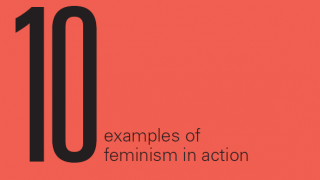
This autumn, a Women, Peace and Security Index was launched at the UN. Compiled by the Georgetown Institute for Women, Peace and Security and the Peace Research Institute of Oslo, it ranks 153 countries on: education, financial inclusion, mobile phone use, parliamentary seats, employment, discriminatory laws and norms, son bias, battlefield deaths, intimate partner violence and perception of community safety. Together, these factors provide a snapshot of women’s lives inside their homes and communities, and in public life.
Iceland tops the list. The UK is 12th and the US 22nd. Jamaica (41st) and the UAE (42nd) are above Hungary and Romania (joint 46th); Namibia (48th) and Lao (54th) are above Russia (55th) and Mexico (76th). Afghanistan and Syria are tied at the bottom. But just as all countries need to do more, they all have women who are fighting for progress. Here are 10 examples from across the Index.
1. Columbia
Colombia (96th) is recovering from over five decades of civil war, which left around 220,000 people dead. Rates of sexual and domestic violence are high. But Colombian women have insisted on being a part of the peace process. The accords that bought an end to the war include a requirement for women to participate in transitional justice, and promote formalised rural property rights for women.
2. South Africa
When South Africa (51st) embraced democracy in 1994, women set up the Soul City Programme. Using drama, entertainment and multimedia presentations Soul City has reached more than 80 per cent of South Africa’s population with their message that improv-ing health outcomes, and preventing the spread of AIDS, is best achieved by community action around consent and sexual health education.
Women in Iran (116th) face legal barriers that affect their domestic and professional lives, from restrictions on their ability to travel to exclusion from certain jobs. Speaking out on gender discrimination can lead to imprisonment. Despite these hurdles, Iran’s women lead the region in areas including education and financial inclusion, and activists have launched campaigns, such as ‘One Million Signatures’, to call for changes to the law.
Women played a vital role in bringing peace to Mali (146th). The Platform for Women Leaders of Mali worked – through the media and community engagement – to raise understanding of the peace agreement. After it was signed, they continued to lobby government on threats to their security. A new land-reform policy set aside 15 per cent of government-managed land for women’s associations and other groups in need.
5. Central African Republic
In the Central African Republic (149th) there are many instances of women’s groups working across ethnic and religious lines to reduce tensions and facilitate peace. In the town of Boda, Muslim women have escorted Christian women entering Muslim areas, and Christian women have done the same for Muslim women in Christian areas. Projects have been set up for different communities to farm jointly and participate in sport and drama activities.
6. Mongolia
Female United Nations peacekeepers from Mongolia (39th) have been protecting civilians in Sudan and South Sudan. In Darfur, more than half of the Mongolian troops are women. In South Sudan, they won a medal for actions including rescuing approximately 50 internally displaced people from attempted abduction. The Head of the UN Mission said, “Mongolian peacekeepers have led the way in terms of robustness”, praising the role of women in helping to empower local communities.
In Zambia (111th) women are more likely to own a business than men. Female entrepreneurs are coming to the fore in all sectors of the economy, inducing previously male-dominated industries such as mining. Progress has been led by Zambian women, with support from UN bodies including the International Labour Organization and World Food Programme, which have played a role in providing advice and support for women looking to start a business.
8. Malaysia
In Malaysia (91st) a network of Muslim women set up an organisation called Sisters in Islam to make the case that Islam is a feminist religion and that patriarchal behaviour within Muslim communities and countries comes from men deliberately misreading Islamic texts. Sisters in Islam works with Islamic scholars to to oppose gender-based injustice, and to produce materials that make clear the links between Islam and global human rights standards and norms.
9. Democratic Republic of Congo
In the Democratic Republic of Congo (148th) women in the media have worked with the UN to support victims of sexual exploitation and abuse, and to inform communities as to how to report abuses. These community-based reporting networks have used theatre, songs, quizzes, radio dramas and cartoons in order to expand and spread awareness. This year over 2,000 people were reached, and seven new networks set up.
10. Afghanistan
Afghanistan (152nd) is still one of the worst countries in the world to be a woman. But things are changing thanks to the demands of women’s rights activists. At present, there are more women in senior government positions than ever before. They have also secured a review of the cases of more than 400 women imprisoned due to so-called ‘moral crimes’. To date, over half have been released.
To access the Index and find out more, visit: https://giwps.georgetown.edu/the-index/
In this edition

Editorial: Not even close to equal

A feminist approach is self-evident and necessary

A feminist approach to international engagement
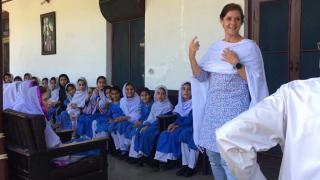
The smart thing to do

Can a feminist foreign policy really make a difference?
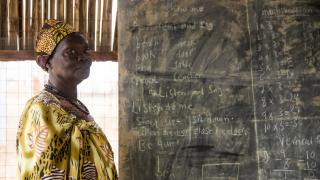
A feminist vision for the United Nations: How far has the Secretary-General come?

"Without the UN, there would have been genocide"

Racing to catch up: Gender parity at the UN

Does 'Zero Tolerance' work?
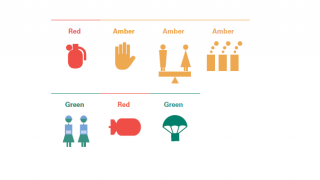
Keeping Britain global

We risk our lives for peace
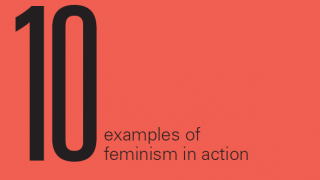
Online exclusives

The Centre for Feminist Foreign Policy

Life in Ghouta

Transfeminism
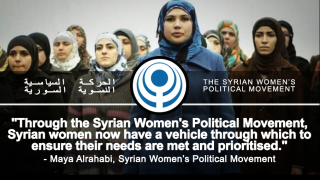
Syrian Women Unite for Political Change
From Mosul to Cox’s Bazar

UN women and the emergence of feminist foreign policy
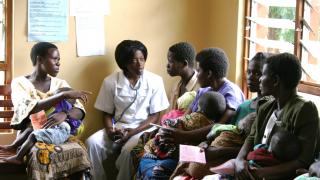
UNFPA: fighting back

“Not in my name”: challenging violent masculinity in South Africa
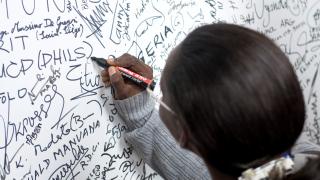
Human trafficking: forced labour and slavery
How Britain is failing women seeking asylum

Sweden and Saudi Arabia: Lessons for the UK

Sharing the "responsibility to protect"
The feminist movement has changed drastically. Here’s what the movement looks like today
ABC News spoke to feminists across the generations to define modern feminism.
Feminism, the first wave of which began with the suffrage movement in the mid-1800s, looks vastly different today than it did generations ago.
Thanks to the use of technology in activism, the adoption of alternative feminist philosophies into the mainstream, and more, feminists say the modern movement is defined by its intersectionality.
Feminists told ABC News that their fight is for the benefit of everyone – of all genders, races and more – led by a diverse set of voices to pave the way for gender equality worldwide in this fourth wave of feminism.
What is modern feminism defined by?
Feminism is the belief in the equality of people of all genders, a set of values aimed at dismantling gender inequality and the structures that uphold it.
These inequalities could be pay inequality, gender-based health care inaccessibility, rigid social expectations, or gender-based violence which still impact people everywhere to this day, feminists say.

In recent decades, the movement has begun to proactively include and uplift the voices of people who have typically been left out of past mainstream feminist movements. This includes women of color, as well as gender diverse people.
“Our gender, our race, disability, class, sexuality, and more – all of these pieces of ourselves generate different lived experiences and also help us understand that no one of us is just one thing,” said Diana Duarte, feminist group MADRE's Director of Policy and Strategic Engagement. “This inclusive vision is a powerful and integral part of feminism.”
Duarte said that “the personal is political” in feminism, “which is a way of understanding that our personal experiences are shaped by political realities that may be situated far from us or close to us.”
Our own experiences, she said, can inform and lead to political solutions.
Modern feminism co-opts the ideals of Black and queer feminist theories, activists say, in that it understands how the issues of gender, race and sexuality are all connected.
Uplifting the most marginalized groups of society will lead to wins for the overall advancement of gender equality worldwide, activists argue.
"[Author] Audre Lorde tells us that we do not live single issue lives, meaning that we do not have the luxury just to say, 'I'm only going to fight on this one issue,' because that's actually not possible," said Paris Hatcher, founder of the activist group Black Feminist Future.

How far has feminism come?
Mainstream feminism has not always been inclusive. For example, the suffrage movement and the teaching of it focuses on white women and their right to vote. National Organization for Women President Christian Nunes told ABC News that Black suffragists who helped win the passage of the 19th Amendment were erased by the white suffragist movement and in history books.
After the amendment’s passage, Black women continued to face barriers to voting.
“Even though there are women of color who were very instrumental in these movements and shifting it, and making sure that these rights were won, they just were not talked about,” Nunes told ABC News. “They were not mentioned, they were unsung heroes.”
She continued, “The fourth wave release focuses on: How do we be inclusive? How do we have allies? How do we really focus on true equality for all women? Because we know other waves of feminism have left women out.”
In becoming more inclusive, feminists around the globe have been able to make major strides in calling attention to and addressing multifaceted issues affecting women and girls across the globe.
In the U.S., the Women’s March and the racial reckoning of 2020 are two movements in which feminists played a major role.
“We're seeing women represented in … in so many different places, hold so many different levels of power that we haven't seen ever,” Nunes said, pointing to the achievements of Vice President Kamala Harris and Supreme Court Justice Ketanji Brown Jackson.
“We're seeing more women leaders, we're seeing more women scholars, we're seeing more activists, we're just seeing women really go out in their own authenticity in their own identities and live more truly and authentically.”
How much further does feminism have to go?
In recent years, though, the U.S. has faced a wave of laws restricting reproductive health care, transgender health care, certain curriculum in education, laws restricting voting rights, and more.
These have been seen as setbacks among feminist activists who argue that these laws create a “patriarchal world.”
Hatcher believes these laws support “a world where white men are in control, where the history that's told is upholding the history and the legacies of white men, and also where white men are able to control who was elected and who is not.”

Feminists say social media and technology will allow feminist movements across the globe to continue to connect, grow and spread their message.
Zikora Akanegbu, the creator of youth-led female empowerment group GenZHer, got her start in feminism on social media. She used it as a tool to be in conversations with and learn from other feminists.
“In middle school, in 2017, when [the MeToo Movement] was coming out on social media, I just joined Instagram,” Akanegbu told ABC News.
“When I think of feminism, I think it's women being able to share their voice … which we're seeing with the women speaking out in Iran the past few months,” Akanegbu said, referring to women protesting the Iranian government over the suspicious death of Mahsa Amini, a woman who was arrested by the country's "morality police" for not wearing a headscarf, as is required by Iranian law, and who died three days later in a hospital.
“Social media is a big part of moving the feminist movement forward,” Akanegbu said.
As for feminism and its reputation, there are still strides to be made, feminists say.
A Pew Research Center survey found that about 6 in 10 American women say “feminist” describes them very or somewhat well.
A majority of Americans – 64% – say feminism is empowering and 42% say it’s inclusive. However, 45% say it is polarizing and 30% say it’s outdated.
While women are more likely to associate feminism with positive attributes like empowering and inclusive, Pew found that men are more likely to see feminism as polarizing and outdated.
However, activists argue that negative perceptions of feminism are perpetuated by those who benefit from the patriarchy.
“[We should] not let our opponents define the identity of feminism for us,” Duarte said.
She continued, “It's important … not to lose sight of the community, the political grounding that feminism has offered to so many, where feminism actually has a great reputation that comes from the positive and meaningful reality of it that people have experienced all around the world.”
Module 9: Gender, Sex, and Sexuality
Feminist movements and feminist theory, learning outcomes.
- Evaluate feminist movements in the U.S. and the strengths and weaknesses of each
- Describe feminist theory
The Feminist Movement
One of the underlying issues that continues to plague women in the United States is misogyny . This is the hatred of or, aversion to, or prejudice against women. Over the years misogyny has evolved as an ideology that men are superior to women in all aspects of life. There have been multiple movements to try and fight this prejudice.
The feminist movement (also known as the women’s liberation movement, the women’s movement, or simply feminism) refers to a series of political campaigns for reform on a variety of issues that affect women’s quality of life. Although there have been feminist movements all over the world, this section will focus on the four eras of the feminist movement in the U.S.
First Wave Feminism (1848-1920)
The first women’s rights convention was held in Seneca Falls, New York (now known as the Seneca Falls Convention) from July 19-20, 1848, and advertised itself as “a convention to discuss the social, civil, and religious condition and rights of woman.” While ther e, 68 women and 32 men–100 out of some 300 attendees–signed the Declaration of Sentiments, also known as the Declaration of Rights and Sentiments, which was principally authored by Elizabeth Cady Stanton.
There was a notable connection between the movement to abolish slavery and the women’s rights movement. Frederick Douglass was heavily involved in both projects and believed it was essential for both groups to work together. As a fellow activistic the pursuit of equality and freedom from arbitrary discrimination, he was asked to speak at the Convention and to sign the Declaration of Sentiments. Despite this instance of movement kinship and intersectionality, it is important to note that no women of color attended the Seneca Convention.
In 1851, Lucy Gage led a women’s convention in Ohio where Sojourner Truth, who was born a slave and gave birth to five children in slavery, gave her famous “Ain’t I a Woman?” speech. Truth was born Isabella Bomfree in 1797 in New York, and was bought and sold four times during her lifetime. Her five-year-old son Peter was illegally sold into slavery in Alabama, though in 1827, with the help of an abolitionist family, she was able to buy her freedom and to successfully sue for the return of her son. [1] . She moved to New York City in 1828 and became part of the religious revivals then underway. Becoming an activist and speaker, in 1843 she renamed herself Sojourner Truth and dedicated her life to working toward the end of slavery and for women’s rights and temperance.
The 15th Amendment, ratified in 1870, was unpopular with suffragists because it did not include women in its guarantee of the right to vote irrespective of “race, color, or previous condition of servitude.” Suffragette Susan B. Anthony (in)famously said, “I will cut off this right arm of mine before I will ever work or demand the ballot for the Negro and not the woman,” but abolitionists and early Republicans were intent on prioritizing Black men’s suffrage over that of women [2] . This further complicated the suffragist movement, as many prominent participants opposed the 15th amendment, which earned them unhelpful support from Reconstruction-era racists who opposed suffrage for Black men.

Figure 1. Woman’s suffrage around the world in 1908.
The 1920 ratification of the 19th Amendment is the biggest success of the first wave, and it took 72 years to get it passed. As you can see from the map above, the United States was far behind other countries in terms of suffrage. Charlotte Woodward, one of 100 signers of the 1848 Declaration of Sentiments, was the only signatory still alive when the Nineteenth Amendment passed; however, Woodward was not well enough to vote. Another leading feminist from this early period was Margaret Sanger, who advocated for free and available birth control.
The limitations of this wave were related to its lack of inclusion of women of color and poor women. The movement was led by educated white women and often willfully ignored pressing issues for the rest of the women in the United States.
Second Wave Feminism (1960s-1980s)
Whereas the first wave of feminism was generally propelled by middle class, western, cisgender, white women, the second phase drew in women of color and women from developing nations, seeking sisterhood and solidarity, and claiming “Women’s struggle is class struggle.” [3] Feminists spoke of women as a social class and coined phrases such as “the personal is political” and “identity politics” in an effort to demonstrate that race, class, and gender oppression are all related. They initiated a concentrated effort to rid society top-to-bottom of sexism, from children’s cartoons to the highest levels of government (Rampton 2015).
Margaret Sanger, birth control advocate from the first wave, lived to see the Food and Drug Administration approve the combined oral contraceptive pill in 1960, which was made available in 1961 (she died in 1966). President Kennedy made women’s rights a key issue of the New Frontier (a slate of ambitious domestic and foreign policy initiatives), and named women (such as Esther Peterson) to many high-ranking posts in his administration (1961-1963).
Like first wave feminists, second wave feminists were influenced by other contemporaneous social movements. During the 1960s, these included the civil rights movement, anti-war movement, environmental movement, student movement, gay rights movement, and the farm workers movement.
The Equal Rights Amendment (ERA) was proposed by first wave feminists in 1923, and was premised on legal equality of the sexes. It was ratified by Congress in 1972 but failed to achieve the three-fourths majority in the states required to make it the 23rd Amendment to the Constitution. [4] . Although this effort was not successful, other gains were made, including increased attention to domestic violence and marital rape issues, the establishment of rape crisis and battered women’s shelters, and changes in child custody and divorce law.
In 1963 Betty Friedan, influenced by Simone De Beauvoir’ s 1947 book The Second Sex , wrote the bestselling The Feminine Mystique , in which she objected to the m ainstream media depiction of women and argued that narrowly reducing women to the status of homemakers limited their potential and wasted their talent. The idealized nuclear family that was prominently marketed at the time, she wrote, did not reflect authentic happiness and was in fact often unsatisfying and degrading for women. Friedan’s book is considered one of the most important founding texts of second wave feminism. In 1966, the National Organization for Women (NOW) formed and proceeded to set an agenda for the feminist movement . Framed by a statement of purpose written by Friedan, the agenda began by proclaiming NOW’s goal to make possible women’s participation in all aspects of American life and to gain for them all the rights enjoyed by men.
Link to Learning
Watch this video clip to learn more about the success and impact of Friedan’s book .
Feminists engaged in protests and actions designed to bring awareness and change. For example, the New York Radical Women demonstrated at the 1968 Miss America Pageant in Atlantic City to bring attention to the contest’s—and society’s—exploitation of women. The protestors tossed instruments of women’s oppression, including high-heeled shoes, curlers, girdles, and bras, into a “freedom trash can.” News accounts incorrectly described the protest as a “bra burning,” which at the time was a way to demean and trivialize the issue of women’s rights (Gay 2018).
Other protests gave women a more significant voice in a male-dominated social, political, and entertainment climate. For decades, Ladies Home Journal had been a highly influential women’s magazine, managed and edited almost entirely by men. Men even wrote the advice columns and beauty articles. In 1970, protesters held a sit-in at the magazine’s offices, demanding that the company hire a woman editor-in-chief, add women and non-White writers at fair pay, and expand the publication’s focus.
Feminists were concerned with far more than protests, however. In the 1970s, they opened battered women’s shelters and successfully fought for protection from employment discrimination for pregnant women, reform of rape laws (such as the abolition of laws requiring a witness to corroborate a woman’s report of rape), criminalization of domestic violence, and funding for schools that sought to counter sexist stereotypes of women. In 1973, the U.S. Supreme Court in Roe v. Wade invalidated a number of state laws under which abortions obtained during the first three months of pregnancy were illegal. This made a nontherapeutic abortion a legal medical procedure nationwide.
Thus, the successes of the second wave included a more individualistic approach to feminism, a broadening of issues beyond voting and property rights, and greater awareness of timely feminist objectives through books and television. However, there were some impactful political disappointments, as the ERA was not ratified by the states, and second wave feminists were not able to create lasting coalitions with other social movements.
Many advances in women’s rights were the result of women’s greater engagement in politics. For example, Patsy Mink, the first Asian American woman elected to Congress, was the co-author of the Education Amendments Act of 1972, Title IX of which prohibits sex discrimination in education. Mink had been interested in fighting discrimination in education since her youth, when she opposed racial segregation in campus housing while a student at the University of Nebraska. She went to law school after being denied admission to medical school because of her gender. Like Mink, many other women sought and won political office, many with the help of the National Women’s Political Caucus (NWPC). In 1971, the NWPC was formed by Bella Abzug, Gloria Steinem, Shirley Chisholm, and other leading feminists to encourage women’s participation in political parties, elect women to office, and raise money for their campaign.

Figure 2 . “Unbought and Unbossed”: Shirley Chisholm was the first Black United States Congresswoman, the co-founder of the Congressional Black Caucus, and a candidate for a major-party Presidential nomination.
Shirley Chisholm personally took up the mantle of women’s involvement in politics. Born of immigrant parents, she earned degrees from Brooklyn College and Columbia University, and began a career in early childhood education and advocacy. In the 1950’s she joined various political action groups, worked on election campaigns, and pushed for housing and economic reforms. After leaving one organization over its refusal to involve women in the decision-making process, she sought to increase gender and racial diversity within political and activist organizations throughout New York City. In 1968, she became the first Black woman elected to Congress. Refusing to take the quiet role expected of new Representatives, she immediately began sponsoring bills and initiatives. She spoke out against the Vietnam War, and fought for programs such as Head Start and the national school lunch program, which was eventually signed into law after Chisholm led an effort to override a presidential veto. Chisholm would eventually undertake a groundbreaking presidential run in 1972, and is viewed as paving the way for other women, and especially women of color, achieving political and social prominence (Emmrich 2019).
Third Wave Feminism (1990s-2008)

Figure 3. The “We Can Do It!” poster from 1943 was re-appropriated as a symbol of the feminist movement in the 1980s.
Third-wave feminism refers to several diverse strains of feminist activity and study, whose exact boundaries in the history of feminism are a subject of debate. The movement arose partially as a response to the perceived failures of and backlash against initiatives and movements created by second-wave feminism. Post-colonial and postmodern theory, which work, among other goals, toward the destabilization of social constructions of gender and sexuality, including the notion of “universal womanhood,” have also been important influences (Rampton 2015). This wave broadened the parameters of feminism to include a more diverse group of women and a more fluid range of sexual and gender identities.
Popular television shows like Sex in the City (1998-2004) elevated a type of third wave feminism that merged feminine imagery (i.e., lipstick, high heels, cleavage), which were previously associated with male oppression, with high powered careers and robust sex lives. The “grrls” of the third wave stepped onto the stage as strong and empowered, eschewing victimization and defining feminine beauty for themselves as subjects, not as objects of a sexist patriarchy; they developed a rhetoric of mimicry, which appropriated derogatory terms like “slut” and “bitch” in order to subvert sexist culture and deprive it of verbal weapons (Rampton 2015).
Third wave feminists effectively used mass media, particularly the web (“cybergrrls” and “netgrrls”), to create a feminism that is global, multicultural, and boundary-crossing. One important third wave sub-group was the Riot Grrrl movement, whose DIY (do it yourself) ethos produced a number of influential, independent feminist musicians, such as Bikini Kill and Sleater-Kinney.
Third wave feminism’s focus on identity and the blurring of boundaries, however, did not effectively address many persistent macrosociological issues such as sexual harassment and sexual assault.
Fourth Wave Feminism (2008-present)
Fourth wave feminism is shaped by technology and characterized by the #metoo and the #timesup movements. Considering that these hashtags were first introduced on Twitter in 2007, this movement has grown rapidly, as social media activism has spread interest in and awareness of feminism.
Waves of accusations against men in powerful positions—from Hollywood directors, to Supreme Court justices, to the President of the United States, have catalyzed feminists in a way that appears to be fundamentally different compared to previous iterations.
As Rampton (2015) states, “The emerging fourth wavers are not just reincarnations of their second wave grandmothers; they bring to the discussion important perspectives taught by third wave feminism; they speak in terms of intersectionality whereby women’s suppression can only fully be understood in a context of the marginalization of other groups and genders—feminism is part of a larger consciousness of oppression along with racism, ageism, classism, ableism, and sexual orientation (no “ism” to go with that).”
Successes of fourth wave feminists include the proliferation of social media tags that promote inclusion and more effectively dismantle the gender and sexual binaries that have fragmented the movement. Female farm workers are demanding to have sexual harassment in the fields addressed alongside Hollywood actors.
The unprecedented number of women who were elected to Congress in the 2018 midterm elections is another sign of success for fourth wave feminists. Specifically, we can see that women of color, whose intersectional commitments also extend to environmental issues and income inequality, are represented in substantial numbers in both chambers.
Watch this video for an overview of gender in sociology. The video begins with an explanation of Harriet Martineau and her important contributions to sociology, then examines gender-conflict theory and three of the four waves of feminism.
Feminist Theory
Feminist theory is a type of conflict theory that examines inequalities in gender-related issues. It uses the conflict approach to examine the maintenance of gender roles and uneven power relations. Radical feminism, in particular, considers the role of the family in perpetuating male dominance (note that “radical” means “at the root”). In patriarchal societies, men’s contributions are seen as more valuable than those of women. Patriarchal perspectives and arrangements are widespread and taken for granted. As a result, women’s viewpoints tend to be silenced or marginalized to the point of being discredited or considered invalid. Peggy Reeves Sanday’s study of the Indonesian Minangkabau (2004) revealed that in societies considered to be matriarchies (where women comprise the dominant group), women and men tend to work cooperatively rather than competitively, regardless of whether a job would be gendered as feminine by U.S. standards. The men, however, do not experience the sense of bifurcated (i.e., divided into two parts) consciousness under this social structure that modern U.S. females encounter (Sanday 2004).
Patriarchy refers to a set of institutional structures (like property rights, access to positions of power, relationship to sources of income) that are based on the belief that men and women are dichotomous and unequal categories of being. The key to patriarchy is what might be called the dominant gender ideology toward sexual differences: the assumption that physiological sex differences between males and females are related to differences in their character, behavior, and ability (i.e., their gender). These differences are used to justify a gendered division of social roles and inequality in access to rewards, positions of power, and privilege. The question that feminists ask therefore is: How does this distinction between male and female, and the attribution of different qualities to each, serve to organize our institutions (e.g., the family, law, the occupational structure, religious institutions, the division between public and private) and to perpetuate inequality between the sexes?
One of the influential sociological insights that emerged within second wave feminism is that “the personal is political.” This is a way of acknowledging that the challenges and personal crises that emerge in one’s day-to-day lived experience are symptomatic of larger systemic political issues, and that the solutions to such problems must be collectively pursued. As Friedan and others showed, these personal dissatisfactions often originated in previously unquestioned, stubbornly gendered discrepancies.
Standpoint Theory
Many of the most immediate and fundamental experiences of social life—from childbirth to who washes the dishes to the experience of sexual violence—had simply been invisible or regarded as unimportant politically or socially. Dorothy Smith’s development of standpoint theory was a key innovation in sociology that enabled these issues to be seen and addressed in a systematic way by examining one’s position in life (Smith 1977). She recognized from the consciousness-raising exercises and encounter groups initiated by feminists in the 1960s and 1970s that many of the immediate concerns expressed by women about their personal lives had a commonality of themes.
Smith argued that instead of beginning sociological analysis from the abstract point of view of institutions or systems, women’s lives could be more effectively examined if one began from the “actualities” of their lived experience in the immediate local settings of “everyday/ everynight” life. She asked, “What are the common features of women’s everyday lives?” From this standpoint, Smith observed that women’s position in modern society is acutely divided by the experience of dual consciousness (recall W.E.B. DuBois’ double consciousness ). Every day women crossed a tangible dividing line when they went from the “particularizing work in relation to children, spouse, and household” to the institutional world of text-mediated, abstract concerns at work, or in their dealings with schools, medical systems, or government bureaucracies. In the abstract world of institutional life, the actualities of local consciousness and lived life are “obliterated” (Smith 1977). Note again that Smith’s argument is in keeping with the second wave feminist idea that “the personal” (child-rearing, housekeeping) complicates and illuminates one’s relationship to “the political” (work life, government bureaucracies).
Intersectional Theory
Recall that intersectional theory examines multiple, overlapping identities and social contexts (Black, Latina, Asian, gay, trans, working class, poor, single parent, working, stay-at-home, immigrant, undocumented, etc.) and the unique, various lived experiences within these spaces. Intersectional theory combines critical race theory, gender conflict theory, and critical components of Marx’s class theory. Kimberlé Crenshaw describes it as a “prism for understanding certain kinds of problems.”
How does the convergence or racial or gender stereotypes play out in classrooms? How does this influence the opportunity for equal education? Consider these issues as you watch this short clip from Kimberlé Crenshaw.
- Michals, D. "Soujourner Truth." National Women's History Museum. https://www.womenshistory.org/education-resources/biographies/sojourner-truth . ↵
- Ford, S. 2017. "How racism split the suffrage movement. Bust Magazine. https://bust.com/feminism/19147-equal-means-equal.html . ↵
- Rampton, M. (2015). "Four waves of feminism." Pacific University Oregon. https://www.pacificu.edu/about/media/four-waves-feminism . ↵
- "Equal Rights Amendment." This Day in History. https://www.history.com/this-day-in-history/equal-rights-amendment-passed-by-congress . ↵
- Revision, Modification, and Original Content. Provided by : Lumen Learning. License : CC BY-SA: Attribution-ShareAlike
- Feminist Movement. Provided by : Wikipedia. Located at : https://en.wikipedia.org/wiki/Feminist_movement . License : CC BY-SA: Attribution-ShareAlike
- First-wave feminism. Provided by : Wikipedia. Located at : https://en.wikipedia.org/wiki/First-wave_feminism#United_States . License : CC BY-SA: Attribution-ShareAlike
- Second-wave feminism. Provided by : Wikipedia. Located at : https://en.wikipedia.org/wiki/Second-wave_feminism . License : CC BY-SA: Attribution-ShareAlike
- Third-wave feminism. Provided by : Wikipedia. Located at : https://en.wikipedia.org/wiki/Third-wave_feminism . License : CC BY-SA: Attribution-ShareAlike
- Seneca Falls Convention. Provided by : Wikipedia. Located at : https://en.wikipedia.org/wiki/Seneca_Falls_Convention#Remembrances . License : CC BY-SA: Attribution-ShareAlike
- The Women's Rights Movement. Authored by : Boundless. Located at : https://courses.lumenlearning.com/boundless-politicalscience/ . Project : Political Science. License : CC BY-SA: Attribution-ShareAlike
- Gender and Gender Inequality. Provided by : OpenStax. Located at : https://openstax.org/books/introduction-sociology-3e/pages/12-2-gender-and-gender-inequality . Project : Sociology 3e. License : CC BY: Attribution . License Terms : Access for free at https://openstax.org/books/introduction-sociology-3e/pages/1-introduction
- Women's Movement USA - 1950s-60s. Authored by : International School History. Located at : https://www.youtube.com/watch?v=amZD8XxTsjQ . License : Other . License Terms : Standard YouTube License
- Kimberlee Crenshaw: What is Intersectionality?. Authored by : National Association of Independent Schools (NAIS). Located at : https://www.youtube.com/watch?v=ViDtnfQ9FHc . License : Other . License Terms : Standard YouTube License
- We Can Do It! Poster. Authored by : J. Howard Miller from Westinghouse. Provided by : Wikipedia. Located at : https://en.wikipedia.org/wiki/Feminist_movement#/media/File:We_Can_Do_It!.jpg . License : CC0: No Rights Reserved
- Woman's Suffrage 1908. Provided by : Wikipedia. Located at : https://en.wikipedia.org/wiki/File:Women%27s_Suffrage_1908.jpg . License : Public Domain: No Known Copyright


Dear Beloved Reader , we're going to be real with you.
We're asking you to join our membership program so we can become fully financially sustainable (and you'll get cool perks too!) and avoid shutting down.
Every year, we reach over 6.5 million people around the world with our intersectional feminist articles and webinars. But we now depend 100% on reader support to keep going.
If everyone reading this only gave $12, we could raise enough money for the entire year in just one day.
For the price of a single lunch out, you can help save us. We're an independent feminist media site led entirely by people of color. If Everyday Feminism has been useful to you, please take one minute to keep us alive. Thank you!
How to Apply Feminism to Your Everyday Life
Click for the Transcript
So, I’m a pretty hardcore feminist. I’m a Women and Gender Studies major in college; I write for feminist websites like RH Reality Check, Everyday Feminism, Adios Barbie; and I’ve done a lot of internships working for nonprofits.
I’m pretty much dedicating my life to being a professional feminist. But that doesn’t mean that you have to.
I think one of the biggest misconceptions about feminism is that you have to be super hardcore, you have to dedicate your life to it, and unless you go full-force, you’re not doing it right. And I’m here to tell you that that is not true.
Feminism is an ideology, so it’s all about the way that you approach the world and live your life. There are so many ways that you can take feminism into your everyday life and not really change anything about your life, but make it more feminist and come from a feminist approach.
So I’m going to give you six ways today that you can do that.
The first thing is to check your privilege. We all have privilege. I guess maybe there’s someone in the world without any, but you can pretty much assume you have privilege. Privilege means that you have some type of automatic entitlement in society.
For example, I’m white. That means I have white privilege. That means that in society, I get preferential treatment just because I’m white. And that means I have access to more resources, it means that I don’t face the same discrimination or prejudice that people of color do, it means I can see people of my race represented in the media, etc.
And with that comes learning about oppression, learning about people’s experiences that are marginalized. Really learning about your privilege and the privileges that you have, and then learning to check those privileges: that’s probably one of the most feminist things you can do.
The next way you can be more feminist in your everyday life is to read some feminist books! I personally love, love, love reading. That’s actually how I sort of discovered feminism: I read Jessica Valenti’s Full Frontal Feminism , which I would highly recommend.
There are so many great women’s studies and gender studies and feminist books out there that you read and really learn all about feminism. It’s cool because there’s so many different topics. So if you’re into history, you can learn about some of the history behind different movements and different waves. Or you could read a book about sexuality if you’re into sexuality. There’s so many different subjects and there’s so many different topics that you can choose from coming from a feminist lens.
If you want a place to start, I would actually recommend Jessica Valenti’s Full Frontal Feminism as a place to start, or even just going into Amazon and typing in “feminism;” there’s a lot of great books that will come up.
The third thing is to talk to people. One of the best ways that we can make feminism part of our lives is to make it a part of our interactions with other people. So that can be talking to your friends and family about things that come up–maybe a recent ban on abortion, or talking about gay marriage being legalized in Oregon (which just happened today). Some kind of news story that has feminism or sexism somehow weaved into it, and asking people’s opinions.
Or you can seek out people who are into feminism and have conversations with them over social media, email some of your favorite authors, and start learning from their experience. And with that, I would also say to start talking to people that may have marginalized perspectives and learning from them. I can’t tell you the amount of people I know, growing up in a white suburb, who don’t have a single friend who’s a person of color, or knows anyone who identifies as LGBT.
So I think talking to people and starting conversations, and also learning from their experience is a really great way to apply feminism in your everyday life.
The fourth thing on my list is to take a class. If you are in college, you could take a Women and Gender Studies class, or you could even take something like Women in History, you could take a class about women in politics. There’s a lot of different classes you could take, it doesn’t necessarily have to be under the umbrella of Women and Gender Studies, but that’s definitely a good place to start.
Especially if you’re getting an education, you should be learning about things you want to learn about! So make sure to fit that in somewhere. Even though, like, no schools have anything decent as far as diversity requirements, maybe challenge yourself to take classes on diversity!
The fifth thing I have on this list is to start a project or blog. Blogging on Tumblr is really one of the first ways I got really involved in feminist activism and I can’t even tell you how much all of my projects and writing have helped me to grow immensely in my feminism.
Taking on something like this not only forces you to gain a new perspective, but it also allows you to tap into a network of feminist bloggers and activists and it can really be a great way to meet other feminists and likeminded people who are maybe in your community, or maybe just people that you can connect with and learn from.
There are opportunities to learn and grow all around you and I think using your skills and your talents and doing something feminist with it is a great way to make it a part of your life!
The last thing I have on this list is to do an internship! Especially if you’re in school, you can get credit from an internship. Or if you’re a recent college graduate, internships can be a great way to get A) professional experience, and B) to learn and gain knowledge in something that you’re interested in.
I have done quite a bit of interning and it’s really helped me to learn how to apply feminism to areas and skill sets that aren’t necessarily associated with it because really any job can turn into a feminist job. You’re using your skill sets and what you’ve studied and taking a feminist approach into applying that.
For example, a lot of my work has been in social media, which isn’t in and of itself something that’s feminist, but it can really easily be applied to feminist work.
One thing I would suggest, if you’re looking for a feminist internship is don’t limit yourself to purely “feminist” positions, but look for positions that might have a feminist philosophy. For example, a lot of youth-based work is defined in this way. Or something, like I said, that you can take your skill sets in and apply it to feminism.
Sites like idealist.org and TheFeministJobsBoard are really great places to start looking.
So I hope this was helpful! Applying feminism to your everyday life really isn’t as hard as it seems. But I can tell you that it’s definitely worth it, and it can change your life for the better.
Have a great week everyone, and I will see you soon!
[do_widget id=”text-101″]
Want to discuss this further? Visit our online forum and start a post!
Erin McKelle is a Contributing Writer for Everyday Feminism. She’s an e-activist, video blogger, student, and non-profit advocate and has launched several projects including Fearless Feminism and Consent is Sexy . In her spare time, Erin enjoys reading, writing bad poetry, drawing, politics and reality TV. You can visit her site here find her blogging at Fearless Feminism , Facts About Feminism , and Period Positive. Follow her on Twitter @ErinMckelle and read her articles here.

Search our 3000+ articles!
Read our articles about:.
Feminism 101 Racial Justice Trans & GNC LGBTQIA
Webinars & Online Trainings

Our online racial justice training
Used by hundreds of universities, non-profits, and businesses. Click to learn more

Most Read Articles

3 Reasons It’s Harmful to Use Mental Illnesses as Adjectives and Metaphors

6 Ways Asian Americans Can Tackle Anti-Black Racism in Their Families

Mental Illness and Sexism: What Calling Women ‘Crazy’ Actually Does

4 Reasons Anti-Feminist Women Hate Feminism (And What They’re Missing)

Does Your Daughter Know It’s Okay to Be Angry?

Here Are 20 Examples of Cissexism That We’ve Probably All Committed at Some Point


Why Exclusionary Racial Preferences Are Racist
Why saying “men are slaves to their sex drive” is insulting to men.
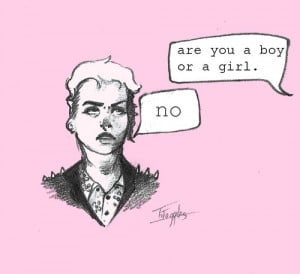
Too Queer for Your Binary: Everything You Need to Know and More About Non-Binary Identities

4 Reasons Why We Should Stop Stigmatizing Women’s Body Hair

I Am Queer, I Am Non-Binary, and I Don’t Know What It Means to Feel Safe in Public

Why We Really Need to Stop Rejecting Religious Feminists from the Movement

5 Amazing Love Scenes Where Pop Culture Got Consent Exactly Right

Why It’s Not Racist When People of Color Point Out White Supremacy in White People’s Actions

4 Ways to Be Gender Inclusive When Discussing Abortion
- Next »

Feminist Theory
Jo Ann Arinder
Feminist theory falls under the umbrella of critical theory, which in general have the purpose of destabilizing systems of power and oppression. Feminist theory will be discussed here as a theory with a lower case ‘t’, however this is not meant to imply that it is not a Theory or cannot be used as one, only to acknowledge that for some it may be a sub-genre of Critical Theory, while for others it stands alone. According to Egbert and Sanden (2020), some scholars see critical paradigms as extensions of the interpretivist, but there is also an emphasis on oppression and lived experience grounded in subjectivist epistemology.
The purpose of using a feminist lens is to enable the discovery of how people interact within systems and possibly offer solutions to confront and eradicate oppressive systems and structures. Feminist theory considers the lived experience of any person/people, not just women, with an emphasis on oppression. While there may not be a consensus on where feminist theory fits as a theory or paradigm, disruption of oppression is a core tenant of feminist work. As hooks (2000) states, “Simply put, feminism is a movement to end sexism, sexist exploitation and oppression. I liked this definition because it does not imply that men were the enemy” (p. viii).
Previous Studies
Marxism and socialism are key components in the heritage.of feminist theory. The origins of feminist theory can be found in the 18th century with growth in the 1970s’ and 1980s’ equality movements. According to Burton (2014), feminist theory has its roots in Marxism but specifically looks to Engles’ (1884) work as one possible starting point. Burton (2014) notes that, “Origin of the Family and commentaries on it were central texts to the feminist movement in its early years because of the felt need to understand the origins and subsequent development of the subordination of the female sex” (p. 2). Work in feminist theory, including research regarding gender equality, is ongoing.
Gender equality continues to be an issue today, and research into gender equality in education is still moving feminist theory forward. For example, Pincock’s (2017) study discusses the impact of repressive norms on the education of girls in Tanzania. The author states that, “…considerations of what empowerment looks like in relation to one’s sexuality are particularly important in relation to schooling for teenage girls as a route to expanding their agency” (p. 909). This consideration can be extended to any oppressed group within an educational setting and is not an area of inquiry relegated to the oppression of only female students. For example, non-binary students face oppression within educational systems and even male students can face barriers, and students are often still led towards what are considered “gender appropriate” studies. This creates a system of oppression that requires active work to disrupt.
Looking at representation in the literature used in education is another area of inquiry in feminist research. For example, Earles (2017) focused on physical educational settings to explore relationships “between gendered literary characters and stories and the normative and marginal responses produced by children” (p. 369). In this research, Earles found evidence to support that a contradiction between the literature and children’s lived experiences exists. The author suggests that educators can help to continue the reduction of oppressive gender norms through careful selection of literature and spaces to allow learners opportunities for appropriate discussions about these inconsistencies.
In another study, Mackie (1999) explored incorporating feminist theory into evaluation research. Mackie was evaluating curriculum created for English language learners that recognized the dual realities of some students, also known as the intersectionality of identity, and concluded that this recognition empowered students. Mackie noted that valuing experience and identity created a potential for change on an individual and community level and “Feminist and other types of critical teaching and research provide needed balance to TESL and applied linguistics” (p. 571).Further, Bierema and Cseh (2003) used a feminist research framework to examine previously ignored structural inequalities that affect the lives of women working in the field of human resources.
Model of Feminist Theory
Figure 1 presents a model of feminist theory that begins with the belief that systems exist that oppress and work against individuals. The model then shows that oppression is based on intersecting identities that can create discrimination and exclusion. The model indicates the idea that, through knowledge and action, oppressive systems can be disrupted to support change and understanding.
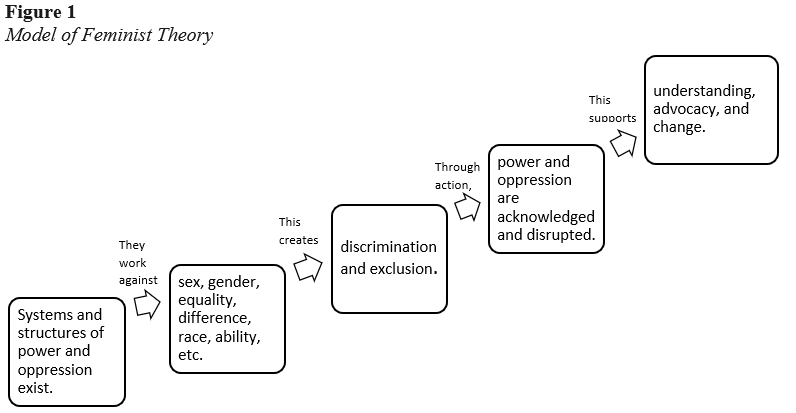
The core concepts in feminist theory are sex, gender, race, discrimination, equality, difference, and choice. There are systems and structures in place that work against individuals based on these qualities and against equality and equity. Research in critical paradigms requires the belief that, through the exploration of these existing conditions in the current social order, truths can be revealed. More important, however, this exploration can simultaneously build awareness of oppressive systems and create spaces for diverse voices to speak for themselves (Egbert & Sanden, 2019).
Constructs
Feminism is concerned with the constructs of intersectionality, dimensions of social life, social inequality, and social transformation. Through feminist research, lasting contributions have been made to understanding the complexities and changes in the gendered division of labor. Men and women should be politically, economically, and socially equal and this theory does not subscribe to differences or similarities between men, nor does it refer to excluding men or only furthering women’s causes. Feminist theory works to support change and understanding through acknowledging and disrupting power and oppression.
Proposition
Feminist theory proposes that when power and oppression are acknowledged and disrupted, understanding, advocacy, and change can occur.
Using the Model
There are many potential ways to utilize this model in research and practice. First, teachers and students can consider what systems of power exist in their classroom, school, or district. They can question how these systems are working to create discrimination and exclusion. By considering existing social structures, they can acknowledge barriers and issues inherit to the system. Once these issues are acknowledged, they can be disrupted so that change and understanding can begin. This may manifest, for example, as considering how past colonialism has oppressed learners of English as a second or foreign language.
The use of feminist theory in the classroom can ensure that the classroom is created, in advance, to consider barriers to learning faced by learners due to sex, gender, difference, race, or ability. This can help to reduce oppression created by systemic issues. In the case of the English language classroom, learners may be facing oppression based on their native language or country of origin. Facing these barriers in and out of the classroom can affect learners’ access to education. Considering these barriers in planning and including efforts to mitigate the issues and barriers faced by learners is a use of feminist theory.
Feminist research is interested in disrupting systems of oppression or barriers created from these systems with a goal of creating change. All research can include feminist theory when the research adds to efforts to work against and advocate to eliminate the power and oppression that exists within systems or structures that, in particular, oppress women. An examination of education in general could be useful since education is a field typically dominated by women; however, women are not often in leadership roles in the field. In the same way, using feminist theory for an examination into the lack of people of color and male teachers represented in education might also be useful. Action research is another area that can use feminist theory. Action research is often conducted in the pursuit of establishing changes that are discovered during a project. Feminism and action research are both concerned with creating change, which makes them a natural pairing.
Pre-existing beliefs about what feminism means can make including it in classroom practice or research challenging. Understanding that feminism is about reducing oppression for everyone and sharing that definition can reduce this challenge. hooks (2000) said that, “A male who has divested of male privilege, who has embraced feminist politics, is a worthy comrade in struggle, in no way a threat to feminism, whereas a female who remains wedded to sexist thinking and behavior infiltrating feminist movement is a dangerous threat”(p. 12). As Angela Davis noted during a speech at Western Washington University in 2017, “Everything is a feminist issue.” Feminist theory is about questioning existing structures and whether they are creating barriers for anyone. An interest in the reduction of barriers is feminist. Anyone can believe in the need to eliminate oppression and work as teachers or researchers to actively to disrupt systems of oppression.
Bierema, L. L., & Cseh, M. (2003). Evaluating AHRD research using a feminist research framework. Human Resource Development Quarterly , 14 (1), 5–26.
Burton, C. (2014). Subordination: Feminism and social theory . Routledge.
Earles, J. (2017). Reading gender: A feminist, queer approach to children’s literature and children’s discursive agency. Gender and Education, 29 (3), 369–388.
Egbert, J., & Sanden, S. (2019). Foundations of education research: Understanding theoretical components . Taylor & Francis.
Hooks, B. (2000). Feminism is for everybody: Passionate politics . South End Press.
Mackie, A. (1999). Possibilities for feminism in ESL education and research. TESOL Quarterly, 33 (3), 566-573.
Pincock, K. (2018). School, sexuality and problematic girlhoods: Reframing ‘empowerment’ discourse. Third World Quarterly, 39 (5), 906-919.

Share This Book
- Increase Font Size
Feminist Theories and Later Life
- Reference work entry
- First Online: 01 January 2022
- pp 1829–1831
- Cite this reference work entry

- Ann Therese Lotherington 3
33 Accesses
Critical feminist gerontology ; Feminist life course approach ; Intersectionality
Feminist theories are critical, meaning that they explore inequality, oppression, and power dynamics to enable conceptual or social transformation. They recognize gender, race, ethnicity, class, sexual orientation, and other differentiating categories as relational organizing principles in society, and claim that privilege, dis/advantages, and oppression are effects of societal processes, not of individual choice. Age as a differentiating category has gained some momentum over the past two decades but is not commonly found in feminist theories and analysis. However, when feminist theories include age, the outcome is new understandings: Later life is analyzed as dynamically formed over time by intersections of two or more differentiating categories.
Understanding diversity and heterogeneity among old people, and diversification of the meaning of age along the lines of...
This is a preview of subscription content, log in via an institution to check access.
Access this chapter
Institutional subscriptions
Alaimo S, Hekman S (eds) (2008) Material feminisms. Indiana University Press, Bloomington/Indianapolis
Google Scholar
Barad K (2007) Meeting the univers halfway. Quantum physics and the entanglement of matter and meaning. Duke University Press, Durham/London
Calasanti T (1999) Feminism and gerontology: not just for women. HIJA 1(1):44–55
Calasanti T (2004a) Feminist gerontology and old men. J Gerontol B Psychol Sci Soc Sci 59(6):S305–S314. https://doi.org/10.1093/geronb/59.6.S305
Article Google Scholar
Calasanti T (2004b) New directions in feminist gerontology: an introduction. J Aging Stud 18(1):1–8. https://doi.org/10.1016/j.jaging.2003.09.002
Freixas A, Luque B, Reina A (2012) Critical feminist gerontology: in the back room of research. J Women Aging 24(1):44–58. https://doi.org/10.1080/08952841.2012.638891
Haraway D (1996) Modest witness: feminist diffractions in science studies. In: Galison P, Stump DJ (eds) The disunity of science, boundaries, contexts, and power. Stanford University Press, Stanford, pp 428–445
Hooyman N, Browne C, Ray R, Richardson V (2002) Feminist gerontology and the life course. Gerontol Geriatr Educ 22(4):3–26. https://doi.org/10.1300/J021v22n04_02
Latimer J (2018) Repelling neoliberal world-making? How the ageing-dementia relation is reassembling the social. Sociol Rev 66(4):832–856. https://doi.org/10.1177/0038026118777422
Mol A (2002) The body multiple: ontology in medical practice. Duke University Press, Durham/London
Sandberg L (2013) Affirmative old age: the ageing body and feminist theories on difference. IJAL 8(1):11–40. https://doi.org/10.3384/ijal.1652-8670.12197
Twigg J (2004) The body, gender and age: feminist insights in social gerontology. J Aging Stud 18:59–73. https://doi.org/10.1016/j.jaging.2003.09.001
Utz RL, Nordmeyer K (2007) Feminism, aging, and the life course perspective. Gerontologist 47(5):705–716. https://doi.org/10.1093/geront/47.5.705
Download references
Author information
Authors and affiliations.
Centre for Women’s and Gender Research and Faculty of Humanities, Social Sciences and Education, UiT The Arctic University of Norway, Tromsø, Norway
Ann Therese Lotherington
You can also search for this author in PubMed Google Scholar
Corresponding author
Correspondence to Ann Therese Lotherington .
Editor information
Editors and affiliations.
Population Division, Department of Economics and Social Affairs, United Nations, New York, NY, USA
Department of Population Health Sciences, Department of Sociology, Duke University, Durham, NC, USA
Matthew E. Dupre
Section Editor information
Department of Sociology, Social Policy and Criminology, School of Law and Social Justice, University of Liverpool, Liverpool, UK
Susan Pickard
Rights and permissions
Reprints and permissions
Copyright information
© 2021 Springer Nature Switzerland AG
About this entry
Cite this entry.
Lotherington, A.T. (2021). Feminist Theories and Later Life. In: Gu, D., Dupre, M.E. (eds) Encyclopedia of Gerontology and Population Aging. Springer, Cham. https://doi.org/10.1007/978-3-030-22009-9_155
Download citation
DOI : https://doi.org/10.1007/978-3-030-22009-9_155
Published : 24 May 2022
Publisher Name : Springer, Cham
Print ISBN : 978-3-030-22008-2
Online ISBN : 978-3-030-22009-9
eBook Packages : Social Sciences Reference Module Humanities and Social Sciences Reference Module Business, Economics and Social Sciences
Share this entry
Anyone you share the following link with will be able to read this content:
Sorry, a shareable link is not currently available for this article.
Provided by the Springer Nature SharedIt content-sharing initiative
- Publish with us
Policies and ethics
- Find a journal
- Track your research
- Search Menu
- Browse content in Arts and Humanities
- Browse content in Archaeology
- Anglo-Saxon and Medieval Archaeology
- Archaeological Methodology and Techniques
- Archaeology by Region
- Archaeology of Religion
- Archaeology of Trade and Exchange
- Biblical Archaeology
- Contemporary and Public Archaeology
- Environmental Archaeology
- Historical Archaeology
- History and Theory of Archaeology
- Industrial Archaeology
- Landscape Archaeology
- Mortuary Archaeology
- Prehistoric Archaeology
- Underwater Archaeology
- Urban Archaeology
- Zooarchaeology
- Browse content in Architecture
- Architectural Structure and Design
- History of Architecture
- Residential and Domestic Buildings
- Theory of Architecture
- Browse content in Art
- Art Subjects and Themes
- History of Art
- Industrial and Commercial Art
- Theory of Art
- Biographical Studies
- Byzantine Studies
- Browse content in Classical Studies
- Classical History
- Classical Philosophy
- Classical Mythology
- Classical Literature
- Classical Reception
- Classical Art and Architecture
- Classical Oratory and Rhetoric
- Greek and Roman Papyrology
- Greek and Roman Epigraphy
- Greek and Roman Law
- Greek and Roman Archaeology
- Late Antiquity
- Religion in the Ancient World
- Digital Humanities
- Browse content in History
- Colonialism and Imperialism
- Diplomatic History
- Environmental History
- Genealogy, Heraldry, Names, and Honours
- Genocide and Ethnic Cleansing
- Historical Geography
- History by Period
- History of Emotions
- History of Agriculture
- History of Education
- History of Gender and Sexuality
- Industrial History
- Intellectual History
- International History
- Labour History
- Legal and Constitutional History
- Local and Family History
- Maritime History
- Military History
- National Liberation and Post-Colonialism
- Oral History
- Political History
- Public History
- Regional and National History
- Revolutions and Rebellions
- Slavery and Abolition of Slavery
- Social and Cultural History
- Theory, Methods, and Historiography
- Urban History
- World History
- Browse content in Language Teaching and Learning
- Language Learning (Specific Skills)
- Language Teaching Theory and Methods
- Browse content in Linguistics
- Applied Linguistics
- Cognitive Linguistics
- Computational Linguistics
- Forensic Linguistics
- Grammar, Syntax and Morphology
- Historical and Diachronic Linguistics
- History of English
- Language Evolution
- Language Reference
- Language Acquisition
- Language Variation
- Language Families
- Lexicography
- Linguistic Anthropology
- Linguistic Theories
- Linguistic Typology
- Phonetics and Phonology
- Psycholinguistics
- Sociolinguistics
- Translation and Interpretation
- Writing Systems
- Browse content in Literature
- Bibliography
- Children's Literature Studies
- Literary Studies (Romanticism)
- Literary Studies (American)
- Literary Studies (Asian)
- Literary Studies (European)
- Literary Studies (Eco-criticism)
- Literary Studies (Modernism)
- Literary Studies - World
- Literary Studies (1500 to 1800)
- Literary Studies (19th Century)
- Literary Studies (20th Century onwards)
- Literary Studies (African American Literature)
- Literary Studies (British and Irish)
- Literary Studies (Early and Medieval)
- Literary Studies (Fiction, Novelists, and Prose Writers)
- Literary Studies (Gender Studies)
- Literary Studies (Graphic Novels)
- Literary Studies (History of the Book)
- Literary Studies (Plays and Playwrights)
- Literary Studies (Poetry and Poets)
- Literary Studies (Postcolonial Literature)
- Literary Studies (Queer Studies)
- Literary Studies (Science Fiction)
- Literary Studies (Travel Literature)
- Literary Studies (War Literature)
- Literary Studies (Women's Writing)
- Literary Theory and Cultural Studies
- Mythology and Folklore
- Shakespeare Studies and Criticism
- Browse content in Media Studies
- Browse content in Music
- Applied Music
- Dance and Music
- Ethics in Music
- Ethnomusicology
- Gender and Sexuality in Music
- Medicine and Music
- Music Cultures
- Music and Media
- Music and Religion
- Music and Culture
- Music Education and Pedagogy
- Music Theory and Analysis
- Musical Scores, Lyrics, and Libretti
- Musical Structures, Styles, and Techniques
- Musicology and Music History
- Performance Practice and Studies
- Race and Ethnicity in Music
- Sound Studies
- Browse content in Performing Arts
- Browse content in Philosophy
- Aesthetics and Philosophy of Art
- Epistemology
- Feminist Philosophy
- History of Western Philosophy
- Metaphysics
- Moral Philosophy
- Non-Western Philosophy
- Philosophy of Language
- Philosophy of Mind
- Philosophy of Perception
- Philosophy of Science
- Philosophy of Action
- Philosophy of Law
- Philosophy of Religion
- Philosophy of Mathematics and Logic
- Practical Ethics
- Social and Political Philosophy
- Browse content in Religion
- Biblical Studies
- Christianity
- East Asian Religions
- History of Religion
- Judaism and Jewish Studies
- Qumran Studies
- Religion and Education
- Religion and Health
- Religion and Politics
- Religion and Science
- Religion and Law
- Religion and Art, Literature, and Music
- Religious Studies
- Browse content in Society and Culture
- Cookery, Food, and Drink
- Cultural Studies
- Customs and Traditions
- Ethical Issues and Debates
- Hobbies, Games, Arts and Crafts
- Lifestyle, Home, and Garden
- Natural world, Country Life, and Pets
- Popular Beliefs and Controversial Knowledge
- Sports and Outdoor Recreation
- Technology and Society
- Travel and Holiday
- Visual Culture
- Browse content in Law
- Arbitration
- Browse content in Company and Commercial Law
- Commercial Law
- Company Law
- Browse content in Comparative Law
- Systems of Law
- Competition Law
- Browse content in Constitutional and Administrative Law
- Government Powers
- Judicial Review
- Local Government Law
- Military and Defence Law
- Parliamentary and Legislative Practice
- Construction Law
- Contract Law
- Browse content in Criminal Law
- Criminal Procedure
- Criminal Evidence Law
- Sentencing and Punishment
- Employment and Labour Law
- Environment and Energy Law
- Browse content in Financial Law
- Banking Law
- Insolvency Law
- History of Law
- Human Rights and Immigration
- Intellectual Property Law
- Browse content in International Law
- Private International Law and Conflict of Laws
- Public International Law
- IT and Communications Law
- Jurisprudence and Philosophy of Law
- Law and Politics
- Law and Society
- Browse content in Legal System and Practice
- Courts and Procedure
- Legal Skills and Practice
- Primary Sources of Law
- Regulation of Legal Profession
- Medical and Healthcare Law
- Browse content in Policing
- Criminal Investigation and Detection
- Police and Security Services
- Police Procedure and Law
- Police Regional Planning
- Browse content in Property Law
- Personal Property Law
- Study and Revision
- Terrorism and National Security Law
- Browse content in Trusts Law
- Wills and Probate or Succession
- Browse content in Medicine and Health
- Browse content in Allied Health Professions
- Arts Therapies
- Clinical Science
- Dietetics and Nutrition
- Occupational Therapy
- Operating Department Practice
- Physiotherapy
- Radiography
- Speech and Language Therapy
- Browse content in Anaesthetics
- General Anaesthesia
- Neuroanaesthesia
- Clinical Neuroscience
- Browse content in Clinical Medicine
- Acute Medicine
- Cardiovascular Medicine
- Clinical Genetics
- Clinical Pharmacology and Therapeutics
- Dermatology
- Endocrinology and Diabetes
- Gastroenterology
- Genito-urinary Medicine
- Geriatric Medicine
- Infectious Diseases
- Medical Toxicology
- Medical Oncology
- Pain Medicine
- Palliative Medicine
- Rehabilitation Medicine
- Respiratory Medicine and Pulmonology
- Rheumatology
- Sleep Medicine
- Sports and Exercise Medicine
- Community Medical Services
- Critical Care
- Emergency Medicine
- Forensic Medicine
- Haematology
- History of Medicine
- Browse content in Medical Skills
- Clinical Skills
- Communication Skills
- Nursing Skills
- Surgical Skills
- Browse content in Medical Dentistry
- Oral and Maxillofacial Surgery
- Paediatric Dentistry
- Restorative Dentistry and Orthodontics
- Surgical Dentistry
- Medical Ethics
- Medical Statistics and Methodology
- Browse content in Neurology
- Clinical Neurophysiology
- Neuropathology
- Nursing Studies
- Browse content in Obstetrics and Gynaecology
- Gynaecology
- Occupational Medicine
- Ophthalmology
- Otolaryngology (ENT)
- Browse content in Paediatrics
- Neonatology
- Browse content in Pathology
- Chemical Pathology
- Clinical Cytogenetics and Molecular Genetics
- Histopathology
- Medical Microbiology and Virology
- Patient Education and Information
- Browse content in Pharmacology
- Psychopharmacology
- Browse content in Popular Health
- Caring for Others
- Complementary and Alternative Medicine
- Self-help and Personal Development
- Browse content in Preclinical Medicine
- Cell Biology
- Molecular Biology and Genetics
- Reproduction, Growth and Development
- Primary Care
- Professional Development in Medicine
- Browse content in Psychiatry
- Addiction Medicine
- Child and Adolescent Psychiatry
- Forensic Psychiatry
- Learning Disabilities
- Old Age Psychiatry
- Psychotherapy
- Browse content in Public Health and Epidemiology
- Epidemiology
- Public Health
- Browse content in Radiology
- Clinical Radiology
- Interventional Radiology
- Nuclear Medicine
- Radiation Oncology
- Reproductive Medicine
- Browse content in Surgery
- Cardiothoracic Surgery
- Gastro-intestinal and Colorectal Surgery
- General Surgery
- Neurosurgery
- Paediatric Surgery
- Peri-operative Care
- Plastic and Reconstructive Surgery
- Surgical Oncology
- Transplant Surgery
- Trauma and Orthopaedic Surgery
- Vascular Surgery
- Browse content in Science and Mathematics
- Browse content in Biological Sciences
- Aquatic Biology
- Biochemistry
- Bioinformatics and Computational Biology
- Developmental Biology
- Ecology and Conservation
- Evolutionary Biology
- Genetics and Genomics
- Microbiology
- Molecular and Cell Biology
- Natural History
- Plant Sciences and Forestry
- Research Methods in Life Sciences
- Structural Biology
- Systems Biology
- Zoology and Animal Sciences
- Browse content in Chemistry
- Analytical Chemistry
- Computational Chemistry
- Crystallography
- Environmental Chemistry
- Industrial Chemistry
- Inorganic Chemistry
- Materials Chemistry
- Medicinal Chemistry
- Mineralogy and Gems
- Organic Chemistry
- Physical Chemistry
- Polymer Chemistry
- Study and Communication Skills in Chemistry
- Theoretical Chemistry
- Browse content in Computer Science
- Artificial Intelligence
- Computer Architecture and Logic Design
- Game Studies
- Human-Computer Interaction
- Mathematical Theory of Computation
- Programming Languages
- Software Engineering
- Systems Analysis and Design
- Virtual Reality
- Browse content in Computing
- Business Applications
- Computer Security
- Computer Games
- Computer Networking and Communications
- Digital Lifestyle
- Graphical and Digital Media Applications
- Operating Systems
- Browse content in Earth Sciences and Geography
- Atmospheric Sciences
- Environmental Geography
- Geology and the Lithosphere
- Maps and Map-making
- Meteorology and Climatology
- Oceanography and Hydrology
- Palaeontology
- Physical Geography and Topography
- Regional Geography
- Soil Science
- Urban Geography
- Browse content in Engineering and Technology
- Agriculture and Farming
- Biological Engineering
- Civil Engineering, Surveying, and Building
- Electronics and Communications Engineering
- Energy Technology
- Engineering (General)
- Environmental Science, Engineering, and Technology
- History of Engineering and Technology
- Mechanical Engineering and Materials
- Technology of Industrial Chemistry
- Transport Technology and Trades
- Browse content in Environmental Science
- Applied Ecology (Environmental Science)
- Conservation of the Environment (Environmental Science)
- Environmental Sustainability
- Environmentalist Thought and Ideology (Environmental Science)
- Management of Land and Natural Resources (Environmental Science)
- Natural Disasters (Environmental Science)
- Nuclear Issues (Environmental Science)
- Pollution and Threats to the Environment (Environmental Science)
- Social Impact of Environmental Issues (Environmental Science)
- History of Science and Technology
- Browse content in Materials Science
- Ceramics and Glasses
- Composite Materials
- Metals, Alloying, and Corrosion
- Nanotechnology
- Browse content in Mathematics
- Applied Mathematics
- Biomathematics and Statistics
- History of Mathematics
- Mathematical Education
- Mathematical Finance
- Mathematical Analysis
- Numerical and Computational Mathematics
- Probability and Statistics
- Pure Mathematics
- Browse content in Neuroscience
- Cognition and Behavioural Neuroscience
- Development of the Nervous System
- Disorders of the Nervous System
- History of Neuroscience
- Invertebrate Neurobiology
- Molecular and Cellular Systems
- Neuroendocrinology and Autonomic Nervous System
- Neuroscientific Techniques
- Sensory and Motor Systems
- Browse content in Physics
- Astronomy and Astrophysics
- Atomic, Molecular, and Optical Physics
- Biological and Medical Physics
- Classical Mechanics
- Computational Physics
- Condensed Matter Physics
- Electromagnetism, Optics, and Acoustics
- History of Physics
- Mathematical and Statistical Physics
- Measurement Science
- Nuclear Physics
- Particles and Fields
- Plasma Physics
- Quantum Physics
- Relativity and Gravitation
- Semiconductor and Mesoscopic Physics
- Browse content in Psychology
- Affective Sciences
- Clinical Psychology
- Cognitive Psychology
- Cognitive Neuroscience
- Criminal and Forensic Psychology
- Developmental Psychology
- Educational Psychology
- Evolutionary Psychology
- Health Psychology
- History and Systems in Psychology
- Music Psychology
- Neuropsychology
- Organizational Psychology
- Psychological Assessment and Testing
- Psychology of Human-Technology Interaction
- Psychology Professional Development and Training
- Research Methods in Psychology
- Social Psychology
- Browse content in Social Sciences
- Browse content in Anthropology
- Anthropology of Religion
- Human Evolution
- Medical Anthropology
- Physical Anthropology
- Regional Anthropology
- Social and Cultural Anthropology
- Theory and Practice of Anthropology
- Browse content in Business and Management
- Business Ethics
- Business Strategy
- Business History
- Business and Technology
- Business and Government
- Business and the Environment
- Comparative Management
- Corporate Governance
- Corporate Social Responsibility
- Entrepreneurship
- Health Management
- Human Resource Management
- Industrial and Employment Relations
- Industry Studies
- Information and Communication Technologies
- International Business
- Knowledge Management
- Management and Management Techniques
- Operations Management
- Organizational Theory and Behaviour
- Pensions and Pension Management
- Public and Nonprofit Management
- Strategic Management
- Supply Chain Management
- Browse content in Criminology and Criminal Justice
- Criminal Justice
- Criminology
- Forms of Crime
- International and Comparative Criminology
- Youth Violence and Juvenile Justice
- Development Studies
- Browse content in Economics
- Agricultural, Environmental, and Natural Resource Economics
- Asian Economics
- Behavioural Finance
- Behavioural Economics and Neuroeconomics
- Econometrics and Mathematical Economics
- Economic History
- Economic Systems
- Economic Methodology
- Economic Development and Growth
- Financial Markets
- Financial Institutions and Services
- General Economics and Teaching
- Health, Education, and Welfare
- History of Economic Thought
- International Economics
- Labour and Demographic Economics
- Law and Economics
- Macroeconomics and Monetary Economics
- Microeconomics
- Public Economics
- Urban, Rural, and Regional Economics
- Welfare Economics
- Browse content in Education
- Adult Education and Continuous Learning
- Care and Counselling of Students
- Early Childhood and Elementary Education
- Educational Equipment and Technology
- Educational Strategies and Policy
- Higher and Further Education
- Organization and Management of Education
- Philosophy and Theory of Education
- Schools Studies
- Secondary Education
- Teaching of a Specific Subject
- Teaching of Specific Groups and Special Educational Needs
- Teaching Skills and Techniques
- Browse content in Environment
- Applied Ecology (Social Science)
- Climate Change
- Conservation of the Environment (Social Science)
- Environmentalist Thought and Ideology (Social Science)
- Natural Disasters (Environment)
- Social Impact of Environmental Issues (Social Science)
- Browse content in Human Geography
- Cultural Geography
- Economic Geography
- Political Geography
- Browse content in Interdisciplinary Studies
- Communication Studies
- Museums, Libraries, and Information Sciences
- Browse content in Politics
- African Politics
- Asian Politics
- Chinese Politics
- Comparative Politics
- Conflict Politics
- Elections and Electoral Studies
- Environmental Politics
- European Union
- Foreign Policy
- Gender and Politics
- Human Rights and Politics
- Indian Politics
- International Relations
- International Organization (Politics)
- International Political Economy
- Irish Politics
- Latin American Politics
- Middle Eastern Politics
- Political Behaviour
- Political Economy
- Political Institutions
- Political Methodology
- Political Communication
- Political Philosophy
- Political Sociology
- Political Theory
- Politics and Law
- Public Policy
- Public Administration
- Quantitative Political Methodology
- Regional Political Studies
- Russian Politics
- Security Studies
- State and Local Government
- UK Politics
- US Politics
- Browse content in Regional and Area Studies
- African Studies
- Asian Studies
- East Asian Studies
- Japanese Studies
- Latin American Studies
- Middle Eastern Studies
- Native American Studies
- Scottish Studies
- Browse content in Research and Information
- Research Methods
- Browse content in Social Work
- Addictions and Substance Misuse
- Adoption and Fostering
- Care of the Elderly
- Child and Adolescent Social Work
- Couple and Family Social Work
- Developmental and Physical Disabilities Social Work
- Direct Practice and Clinical Social Work
- Emergency Services
- Human Behaviour and the Social Environment
- International and Global Issues in Social Work
- Mental and Behavioural Health
- Social Justice and Human Rights
- Social Policy and Advocacy
- Social Work and Crime and Justice
- Social Work Macro Practice
- Social Work Practice Settings
- Social Work Research and Evidence-based Practice
- Welfare and Benefit Systems
- Browse content in Sociology
- Childhood Studies
- Community Development
- Comparative and Historical Sociology
- Economic Sociology
- Gender and Sexuality
- Gerontology and Ageing
- Health, Illness, and Medicine
- Marriage and the Family
- Migration Studies
- Occupations, Professions, and Work
- Organizations
- Population and Demography
- Race and Ethnicity
- Social Theory
- Social Movements and Social Change
- Social Research and Statistics
- Social Stratification, Inequality, and Mobility
- Sociology of Religion
- Sociology of Education
- Sport and Leisure
- Urban and Rural Studies
- Browse content in Warfare and Defence
- Defence Strategy, Planning, and Research
- Land Forces and Warfare
- Military Administration
- Military Life and Institutions
- Naval Forces and Warfare
- Other Warfare and Defence Issues
- Peace Studies and Conflict Resolution
- Weapons and Equipment

- < Previous chapter
- Next chapter >
13 Feminist Standpoint
Kristen Intemann, Department of History and Philosophy, Montana State University
- Published: 03 February 2015
- Cite Icon Cite
- Permissions Icon Permissions
Despite a long history of scholarship on feminist standpoint theory, the central claims of the view are often interpreted in different ways, some of which render them implausible. Moreover, as more sophisticated versions of the view have evolved, it has become less clear how standpoint theory offers a distinct alternative to other feminist epistemologies or philosophies of science, such as feminist empiricism. This chapter elucidates and defends an interpretation of feminist standpoint theory known as feminist standpoint empiricism , understood as a branch of feminist empiricism that is committed to producing empirically adequate knowledge that challenges, rather than reinforces, systems of oppression. In doing so, it identifies not only the claims that feminist standpoint theorists share with feminist empiricists, but also the unique epistemological and political benefits that feminist standpoint theory offers.
Introduction
Sandra Harding originally distinguished “standpoint feminism” from “feminist empiricism,” describing the latter as the view that instances of male bias are merely cases of “bad science” that could be eliminated if scientists more rigorously adhered to empiricist methods and norms for scientific research ( Harding 1986 ; 1991 , 111–120). In contrast, standpoint theory maintained that such biases could occur even in cases where traditional scientific methodologies were followed. As a result, correcting for bias required a new conception of objectivity, as well as mechanisms for recognizing the ways in which power structures can shape and limit what we know. Since then, both feminist empiricism and standpoint theory have become increasingly more nuanced as philosophies of science, and it now appears that the two views have more similarities than differences ( Intemann 2010b ). This article will elucidate and defend a version of standpoint theory referred to as feminist standpoint empiricism ( Intemann 2010b ). While largely compatible with feminist empiricism, feminist standpoint empiricism offers additional important resources for producing science that is not only epistemically adequate but also more socially responsive.
The Historical Development of Standpoint Theory
Standpoint feminism originated in the 1970s among Marxist feminists, who were interested in understanding how hierarchical structures, such as capitalism and patriarchy, shape and limit our knowledge practices ( Smith 1974 ; Hartsock 1983 ; Rose 1983 ; Harding 1986 ; Hill Collins 1991 ; Harding 1993 ). As an epistemological view, it was motivated by the increasing numbers of women entering the sciences, who were able to identify sexist and androcentric biases in science that had largely gone unnoticed (e.g., Hrdy 1986 ; Harding 1986 ; Gero and Conkey 1991 ). Feminists began looking at the hierarchical power structures that shaped the production of scientific knowledge and sought to explain why, for example, the underrepresentation of women in science was not only a political injustice but might also hinder, distort, or limit the production of scientific knowledge.
Early standpoint theorists argued that there was something distinctive about the experiences of women in virtue of their socially constructed roles within a capitalistic patriarchal society ( Smith 1974 ; Hartsock 1983 ; Rose 1983 ; Harding 1986 ). Gender socialization, including the gendered division of labor, tended to give rise to experiences that provided resources for identifying problematic assumptions in the theories and frameworks widely held by those in power, who were likely to benefit from justifying existing social inequalities ( Rosaldo 1980 ). They argued that the experiences of women could play a crucial role in challenging dominant assumptions and helping to generate knowledge “for women,” including knowledge that could be used for liberatory purposes ( Hartsock 1983 ; Harding 1986 ). The central claim of the early standpoint theorists, then, was that knowledge was generated from a particular standpoint, and that a feminist standpoint, informed by the experiences of women, was epistemically advantaged.
Early formulations of this view were taken to be implausible not only by nonfeminists but also by other feminist theorists. Standpoint theory has been interpreted as the claim that women have a distinct way of knowing that is different from that of men. As a result, standpoint feminists have been charged with reinforcing gender stereotypes and falsely assuming that all women have some sorts of universal shared experiences or interests in virtue of being oppressed ( Bar On 1993 ; Hekman 1997 ; Haack 1998 ). This sort of essentialism seems particularly problematic because of the ways in which sexism also intersects with other forms of oppression, such as racism, classism, and heterosexism. As a result, some standpoint theorists have stressed that the notion of a feminist “standpoint” must be understood in a way that captures the differences among women and the ways in which sexism intersects with other systems of oppression. For example, some argued that experiences produced by the intersections of sexism with racism, ethnocentrism, and nationalism could also produce distinctive and important epistemological resources ( Garcia 1989 ; Narayan 1989 ; Hill Collins 1991 ).
Standpoint theorists have also been interpreted as claiming that women always have an automatic epistemic privilege in virtue of being oppressed ( Hekman 1997 ; Haack 1998 ; Pinnick et al. 2003 ). That is, they have been understood as claiming that membership in an oppressed group is sufficient to give women a less distorted view of the world and that this epistemic advantage would be present in any epistemological context. This is dubious because there are cases of members of oppressed groups having a less accurate view of the world, because they have either internalized their oppression or lack the educational resources useful for achieving certain kinds of knowledge. Moreover, it is difficult to see how oppressed groups would have an epistemic advantage in every epistemological context. In some areas of knowledge (e.g., theoretical physics), the experiences one has in virtue of one’s social position appear to be irrelevant to the content of the theories or the evidence at stake. This concern has led some standpoint theorists to emphasize that the main aim of standpoint theory is not to give an epistemological account of knowers or of what it is to know something; rather, standpoint theory is a methodological resource for understanding power structures and producing knowledge that is more likely to benefit marginalized groups ( Smith 1997 ; Rolin 2009 ; Kourany 2012 ). Understood in this way, it is a methodological approach that may be beneficial in some contexts more than others.
Finally, there are concerns that the view is necessarily committed to some form of epistemological or moral relativism ( Code 1991 ; Harding 1991 ; Longino 1993 ; Clough 2003 ; Pinnick et al. 2003 ). Standpoint theory has been interpreted as claiming that knowledge can only be generated from a particular “perspective” and that which theories or claims are true or justified depends on whether one happens to adopt a “feminist perspective.” This would be troubling, not only to those who find such relativism implausible, but particularly to standpoint feminists, who clearly wanted to argue that some claims and value judgments—in particular, feminist value judgments (e.g., that sexist oppression is bad)—are better or more justified than others ( Clough 2003 ). Thus, some have also argued that standpoint theory is inherently inconsistent in arguing that all knowledge is generated from a particular standpoint while simultaneously claiming that knowledge produced from a feminist standpoint is better in some sense ( Antony 1993 ; Longino 1993 ). This tension is not thought to rise for feminist empiricist views, because feminist empiricism takes empirical adequacy to be a criterion for choosing between competing knowledge claims in a way that better grounds the objectivity of knowledge.
Thus, contemporary standpoint theorists have acknowledged that for the view to be successful, the theory must better articulate the notion of a “standpoint” in a way that (1) does not essentialize women or oppressed groups, (2) clarifies the potential epistemic benefits while recognizing that such benefits are not automatic, (3) avoids a pernicious form of epistemological or moral relativism, and (4) resolves the tension between the claim that knowledge is somehow relative to a standpoint and the claim that some standpoints are better than others ( Wylie 2003 ; Crasnow 2006 ; Rolin 2006 ; Harding 2008 ; Rolin 2009 ; Intemann 2010b ). At the same time, insofar as standpoint theorists have clarified their claims in ways that address these concerns, it has become increasingly difficult to see how standpoint feminism offers distinct epistemological resources as a philosophy of science, particularly as it appears to have much in common with feminist empiricist views ( Campbell 1998 ; Intemann 2010a , 2010b ). Indeed, many contemporary standpoint theorists have endorsed the importance of empirical adequacy as a standard for evaluating theories, claims, and models ( Wylie 2003 ; Intemann 2010b ). Thus, the central challenge is whether feminist standpoint theory can be understood so as to address the objections it has historically faced while demonstrating that it offers unique resources that warrant its adoption over other, arguably less controversial, feminists epistemologies. In the next section, I offer an interpretation of the central tenets of standpoint theory that attempts to address this challenge.
Feminist Standpoint Empiricism: An Interpretation and Defense
Several interrelated theses have been advanced by standpoint theorists. These will be articulated slightly differently here than they have been elsewhere ( Wylie 2003 ; Harding 1993 ; Harding 2004 ; Crasnow 2006 ; Rolin 2006 ; Intemann 2010b ; Crasnow 2014 Intemann and de Melo-Martín 2014a ) but will help to unpack the notion of a standpoint in ways that can address the objections the view has historically faced, while highlighting the unique resources the view has to offer. The central tenets to be discussed are
the situated-knowledge thesis , which holds that social location systematically influences our experiences, shaping and limiting what we know, such that knowledge is contextually generated from a standpoint or an epistemic community that achieves a critical group consciousness through a process of transformative criticism governed by shared standards of evaluation;
the empirical adequacy thesis, which holds that the achievement of a standpoint requires that participants share a commitment to empirical adequacy but that how this is understood is contextually determined by the other cognitive aims that constitute a context of inquiry (including political aims);
the normative commitment thesis , the view that the achievement of a feminist standpoint requires a commitment to challenge, rather than reinforce, systems of oppression in order to arrive at a group consciousness of how power structures and influences the world (including epistemic practices);
the methodological thesis, which holds that scientific research ought to proceed by studying from the margins out, so as to understand how existing power structures shape and limit knowledge production, as well as phenomena under investigation;
the epistemic advantage thesis, the view that inquiry that achieves a feminist standpoint is epistemically advantaged (at least in some contexts).
This article explores and defends each of these five main tenets.
The Situated-Knowledge Thesis
The situated-knowledge thesis asserts that social position shapes and limits what we can know because it influences the kind of experiences we have. Historically, systems of oppression (such as racism, sexism, heterosexism, classism, and colonization) have influenced the material circumstances of individuals (such as their living conditions, their opportunities, and their treatment in a variety of social situations). As a result, individuals who occupy different social locations have, to some extent, different experiences. In this way, standpoint theorists take knowledge to be embodied rather than acquired through a universal, disembodied, rational mind. Different bodies are subjected to different material conditions and forces that can give rise to different experiences and thus to different evidence and beliefs.
Which social categories shape experience are not homogeneous within a particular social group. Women, for example, will have different experiences in virtue of their positioning by race, class, geographical location, and so on. Nonetheless, membership in certain groups is relevant to the kinds of experiences one has in virtue of the fact that certain social categories shape social, economic, political, and other material circumstances. Of course, which social categories shape experience is a contingent matter. If, for example, racism ceased to exist, then race would no longer shape our experiences in the same ways. Thus, the particular social categories that have epistemic significance can change over time.
Because experiences are socially situated, knowledge is achieved from a particular standpoint. What exactly is a standpoint? A standpoint is not merely one’s perspective in virtue of the sorts of experiences one has from a particular social location. Standpoint theorists endorse the claim, widely held by many feminist epistemologists, that the locus of knowledge is at the level of communities, rather than individuals ( Harding 1986 ; Longino 1990 ; Nelson 1990 ; Code 1991 ). Thus, a standpoint is something achieved by a group. Individuals may contribute to the achievement of a standpoint, but this is something that individuals cannot accomplish on their own.
A standpoint is a group consciousness that occurs through a process of transformative criticism, by reflecting on and evaluating the experiences and beliefs of the individuals that constitute an epistemic community ( Wylie 2003 ; Rolin 2006 ; Intemann 2010b ). The consciousness-raising groups of the 1970s provide an example of how groups of women were able to reflect on their individual experiences and collectively identify patterns they were not able to recognize on their own ( Smith 1997 ). Individual women had experiences, such as being groped by a male coworker, which they had previously interpreted as accidental, imagined, or deserved. But, when multiple women in the group reported similar experiences, their individual interpretations became inconsistent with the pattern of collective experiences. As a group, women were able to see patterns in their experiences, identify relationships between those patterns and oppressive arrangements, and achieve an understanding of how systems of oppression limit and shape their knowledge. But, equally important to generating this knowledge were the differences in their experiences. For example, the ways in which some African American women experience sexual harassment may be different from white women in virtue of different stereotypes about African American women’s sexuality. Similarly, sexism that emerged in an office setting may be fundamentally different than at a construction site. This is because gendered norms and expectations are different in relation to race and class. Thus, understanding such phenomena as sexual harassment or sexism in the workplace required a critical analysis from a diverse group of women and men to help understand these intersecting dimensions. For this reason, standpoint theorists maintain that epistemic communities are more objective, or more epistemically robust, when they include participants from diverse social categories.
For this sort of transformative criticism to occur there must be some shared values or standards about what constitute good reasons for accepting a claim, hypothesis, or explanation ( Longino 1990 , 2002 ; Rolin 2006 ; Borgerson 2011 ). Feminist empiricists take empirical adequacy to be a necessary standard for all epistemic communities ( Longino 1990 , 2002 ; Solomon 2001 ; Clough 2004 ; Borgerson, 2011 ). While standpoint feminists can agree that empirical adequacy is an important theoretical virtue ( Campbell 1998 ; Wylie 2003 ; Intemann 2010b ), they have a potentially different understanding of empirical adequacy that may distinguish them from some feminist empiricists.
The Empirical Adequacy Thesis
Like feminist empiricists, feminist standpoint theorists maintain that a central aim of inquiry is to provide empirically adequate theories, models, and explanations. At the same time, standpoint feminists insist that empirical adequacy is not a neutral criterion for theory choice that is independent of other values held ( Intemann and de Melo Martín 2014a , 2014b ). That is, judgments about whether a claim is empirically adequate depend on additional assumptions and standards about what data needs to be accounted for in a particular case, how we should understand an empirical success, and when it is reasonable to revise background assumptions or make ad hoc adjustments to claims in order to account for countervailing data.
Consider, for example, the integrated assessment models that are used to measure and predict climate-change impacts. Whether a model of climate impacts can be said to be empirically adequate depends on judgments about what data we believe a model needs to explain and predict. A model may be consistent with data about, for example, the observed global average temperature record. It may also be able to make successful novel predictions (such as about sea-level rise, an increase in extreme weather events, glacial retreat, or the number of acres of farmland that will no longer be farmable because of increased salinity in the soil). The model may not, however, be able to explain or predict changes in indigenous hunting practices or the loss of linguistic traditions. This is because such models often do not recognize cultural practices as phenomena that need to be explained or predicted ( Schnieder et al. 2000 ; Agarwal 2002 ). Thus, whether a model is empirically successful depends on additional value judgments about what we take to be an impact that an empirically successful model must account for.
Similar disagreements arise in research on the safety of genetically modified organisms ([GMOs]; de Melo-Martín and Meghani 2008 ; DeFrancesco 2013 ). For standpoint theorists, whether the hypothesis that GMOs are safe is empirically adequate depends on additional assumptions about what constitutes a risk to human health or the environment, what sorts of risks are acceptable, whether the potential risks and benefits are justly distributed (e.g., whether they will disproportionately impact marginalized groups negatively), and how much empirical evidence is needed to accept that GMOs are safe. Those who have different conceptions about what constitutes a risk, or how much empirical data is needed will disagree about whether there is adequate empirical evidence for GMO safety.
Thus, judgments about empirical adequacy depend on additional shared standards and assumptions about the cognitive aims of inquiry. Some of these aims and standards will be social, ethical, and political value judgments about what features of the world we take to be salient or important to project. These assumptions will be relevant to determining whether a model or theory accounts for the relevant data or is able to make empirical predictions of the right kind.
It is not clear whether all feminist empiricists would agree. Some feminist empiricists seem to take empirical adequacy as a politically value-neutral criterion that trumps other considerations (e.g., Solomon 2001 ; Borgerson 2011 ). Longino, however, seems to recognize that different values and interests may produce different understandings of empirical adequacy ( Longino 2002 , 155). And, feminist empiricists also acknowledge that social and political values may help constitute the aims of inquiry ( Longino 1990 , 86–87). Thus, some feminist empiricists might agree that the social and political aims of research might constitute further shared standards that help participants understand and apply the virtue of empirical adequacy.
But, for some feminist empiricists, this may lead to tension. Longino has argued that the kind of diversity needed for objectivity is a diversity of values and interests among participants. Inquirers with diverse values and interests provide a system of checks and balances to ensure that the idiosyncratic values or interests of scientists do not inappropriately influence scientific reasoning. But if ideal epistemic communities comprise members with diverse values and interests, there is a sense in which they may not share a standard of empirical adequacy ( Intemann and de Melo-Martín, 2014b ). Those with different interests and values may all claim to value empirical adequacy, but they may have different ideas about what that means. For example, creationists and evolutionary theorists both claim to value empirically adequate theories, but the other values that they take to be constitutive of inquiry lead to different assumptions about the data an empirically adequate theory must account for ( Intemann and de Melo-Martín, 2014b ). Hence, it appears that members of an epistemic community must share more standards than just empirical adequacy to be able to make judgments about what constitutes empirical success and which theories are empirically adequate. Of course, if participants share ethical and political commitments, this would decrease the sort of diversity that Longino considers necessary for objectivity.
This tension does not arise for standpoint feminist empiricists for two reasons. First, standpoint feminist empiricists claim that it is diversity of social positions, rather than diversity of values that is necessary for achieving objectivity. This is partly because standpoint feminists take experiences to be embodied and because social categories track power relations in ways that are epistemically significant. Given historical systems of oppression, individuals from diverse social positions and backgrounds are likely to have had different experiences, and these experiences can provide access to evidence that has implications for the plausibility of background assumptions, models, and methods. Second, feminist standpoint theorists claim that achieving a standpoint involves sharing a certain sort of political commitment. It requires a commitment to producing knowledge that benefits marginalized groups and challenges systems of oppression. Thus, feminist standpoint empiricism can be seen as a branch of feminist empiricism that takes social diversity rather than diversity of values and interests to be epistemically beneficial for promoting objectivity and involves a particular political commitment. I now examine this political commitment in greater detail.
The Normative Commitment Thesis
Achieving a feminist standpoint requires a commitment to particular social and political aims of inquiry—namely, a commitment to understand and challenge systems of oppression ( Wylie 2003 ; Harding 2004 ; Intemann 2010b ; Crasnow 2014 Intemann and de Melo Martín 2014a ). According to Harding (2004 , 31), a feminist standpoint “intends to map the practices of power, the ways the dominant institutions and their conceptual frameworks create and maintain oppressive social relations.” Adopting a feminist standpoint involves revealing the ways in which gender, race, class, sexuality, ability, and colonization have shaped and influenced objects of investigation, including scientific practices themselves. This includes understanding how hierarchical power structures (e.g., patriarchy or racism) shape or limit research questions, conceptual frameworks, methodological decisions, models, background assumptions, or interpretations of data.
A feminist standpoint, then, takes one of the aims of inquiry to be producing knowledge that is knowledge for marginalized groups in order to counteract, remove, or minimize the ways in which oppressive systems limit the health, well-being, or life prospects of the members of these groups (including their ability to participate in the production of knowledge). Thus, some have argued that standpoints require a kind of activism ( Hundleby 1997 ; Intemann 2010b ; Crasnow 2014 ). They require understanding and revising our epistemic practices so as to identify, understand, and ultimately abolish the ways in which systems of oppression limit knowledge production. It is this normative commitment that also grounds the methodological thesis (see the next section).
What justifies the adoption of this political commitment for feminist standpoint empiricists? It is justified insofar as there are good reasons to support more general ethical claims made by feminists. Feminists maintain that oppression is bad and ought to be abolished. Moreover, scientific knowledge is a resource for understanding and addressing social problems, generating interventions, and developing public policies and has great potential to address injustices caused by oppression ( Kourany 2003 ; Kourany, 2010 ). As such a resource, scientific knowledge is a public good that ought to be equitably distributed, in particular, to benefit those who are least well off ( Pogge 2009 Daniels 2007 ; Kourany 2010 ; Kitcher 2011 ). Marginalized groups have priority because they are disproportionately affected by social problems. Marginalized groups in resource-poor countries in the global South are disproportionately affected by health and environmental problems (such as climate change and pollution) in virtue of their material circumstances, the nature of their economies, their lack of resources with which to mitigate these problems, and existing inequalities. Moreover, it is often the case (as with climate change) that marginalized groups bear less responsibility for the existence of these problems. Thus, there are compelling ethical reasons to adopt the political commitment that is necessary for achieving a feminist standpoint.
At the same time, it should be noted that the normative commitment involved in feminist standpoint empiricism should be understood broadly to allow for multiple conceptions of what counts as challenging systems of oppression or producing knowledge that benefits marginalized groups. There may be different ways to understand who is marginalized ( Intemann and de Melo-Martín, 2014a ). For example, one might be marginalized in virtue of belonging to a group that historically has been underrepresented in science, is the least well off in terms of resources or opportunities, or is the most seriously affected by a particular problem. Moreover, the values and interests of members of marginalized groups can conflict, so that there may be disagreement about how to prioritize or weigh competing interests. Thus, political commitment to challenging systems of oppression must be broadly understood to incorporate a plurality of ways to understand these values and interests, as well as how they might best be promoted in science. Critical discussion of these differences and disagreements is a necessary and important part of the process of achieving a feminist standpoint. At the same time, some values and interests will simply be incompatible with the general political commitment that standpoint feminism requires. Thus, it is not the case that an epistemic community would be necessarily more objective or more likely to achieve a feminist standpoint with the inclusion of those who do not value the needs and interests of marginalized groups or who do not share an interest in challenging systems of oppression.
The Methodological Thesis
The political commitment required to achieve a feminist standpoint also gives rise to a methodological commitment when carrying out empirical investigations. The methodological thesis of standpoint feminism asserts that research ought to proceed by “studying-up,” or studying from the margins out, so as to understand how existing power structures shape and limit knowledge production, as well as the scientific phenomena under investigation ( Crasnow 2006 ; Harding 2008 ; Intemann 2010b ; Intemann and de Melo-Martín, 2011 ). Studying from the margins out requires researchers to work with members of marginalized groups to identify and frame scientific problems, identify the full range of stakeholders affected by a problem, consider the ways in which the traditional conceptual frameworks may fail to serve the interests of different groups, investigate the ways the problem may manifest differently for different social groups, and examine how systems of oppression may play a role in or contribute to the problem.
When researchers fail to study from the margins out, they may produce knowledge, interventions, technologies or policies that neglect the needs and circumstances of marginalized groups. For example, researchers who were aiming to reduce cervical cancer morbidity and mortality focused their research and clinical trials on women in North America and Western Europe ( Intemann and de Melo-Martín 2010 ). The resulting human papilloma virus (HPV) vaccines that were targeted to high-risk HPV-types that are less common in the areas where the incidence of cervical cancer morbidity and mortality is the highest: Sub-Saharan African, Southeast Asia, and Latin America. Moreover, the economic and cultural conditions in those areas make it very difficult for the resulting vaccines to be used effectively ( Intemann and de Melo-Martín 2010 ; de Melo-Martín and Intemann, 2011 ). This is because the vaccines are quite expensive and require refrigeration, and these populations also need access to healthcare professionals to administer the vaccine in three doses over several months. Thus, the vaccines are less likely to benefit those who are at greatest risk of developing and dying from cervical cancer.
Similarly, climate change researchers have often (unintentionally) neglected the interests of marginalized groups. General circulation models have been highly successful in predicting average global climate changes, but their ability to predict the specific changes that are likely to occur in particular geographic regions, information that is crucial for developing local adaptation strategies ( Oreskes and Smith 2010 ). As mentioned, models that measure the impact of climate change often neglect to measure those things that are valued by members of marginalized groups (e.g., cultural practices, or dependence on the global North; Agarwal, 2002 ). In addition, many climate impact models are aggregate cost-benefit models that neglect to measure the distribution of impacts over graphical areas or social groups. Thus, while a model may show that world food supply will not be decreased overall by climate change, it may obscure the fact that agricultural opportunities in certain regions in the global South will decrease while food production in the north will increase. As a result, research may fail to produce important information that is crucial to the development of just adaptation and mitigation policies ( Agarwal 2002 ; Intemann 2011 ).
Practically speaking, what, specifically, does the methodological thesis require? First, studying from the margins out requires identifying and working with marginalized groups to set research agendas and define research problems. University researchers may wish to study a behavior intervention to address dental problems in Native American communities. But a Native community may see food scarcity as its most pressing issue. Thus, investigations related to food scarcity may be more important and ultimately more important than addressing dental problems. Indeed, successful prevention of dental problems may necessitate addressing larger food-scarcity issues as lack of access to affordable nutrious food may also contribute to dental decay.
Second, studying from the margins out involves using axes of oppression as categories of analysis in scientific investigations. It requires researchers to identify stakeholders affected by a particular scientific problem and examine the ways the problem may manifest differently for different social categories. For example, biomedical researchers ought to consider such questions as: What health problems are most significant to members of marginalized groups? Does a particular disease or health problem manifest or operate differently for those of different sexes, ethnicities, classes, or geographical locations? Are there social, political, economic, or biological differences among these groups that might be relevant to understanding the epidemiology of a disease? Do differences among these groups affect the effectiveness of possible solutions to this particular health problem? What differences in social conditions exist that present challenges or require trade-offs in addressing the disease burden? Using these sorts of categories of analysis ensures that the framing of research problems, choice of methodologies, selection of data, and interventions developed are more likely to be responsive to and effective for the needs of marginalized groups.
Third, studying from the margins out requires researchers to reflect critically about their choice of a conceptual framework and methodologies in relation to both the social and epistemic aims of research. Anderson (2004) , for example, has discussed the work of sociologists who reconceptualized what should constitute a harm experienced by children of divorce. Using a feminist lens, such research employed a broader conception of potential harms that included harms that might come from women staying in inegalitarian households, which had previously been ignored. Crasnow (2014) has highlighted the work of criminologist Elizabeth Stanko (1997) who investigated the various strategies women employ to avoid assault. Rather than employing a traditional framework for behaviors that count as “defensive strategies,” Stanko began by asking her subjects to give an account of “things that we do to keep safe.” As a result, she elicited a broader range of descriptions of what constitutes self-defense, such as choosing a place to live, deciding when and where to walk, choosing a time to do errands, deciding what to wear and so on. Studying from the margins out requires that researchers critically reflect on the social and political aims of their research and consider which methodologies or conceptual frameworks are most likely to further those goals.
Fourth, studying from the margins out requires a critical evaluation of evidentiary standards, including what kinds of data should be collected, what constitutes good evidence, and how much evidence is needed to accept a hypothesis, explanation, or model. Kristin Shrader-Frechette (1997) , for example, has argued that hydrogeological models that predict the dispersion of radioactive nuclear waste material may not be “good enough” to accept the predictions they yield, given the risks posed to those potentially exposed to contaminated ground water. In biomedical research, the evidence of the efficaciousness of a drug in a highly controlled, randomized, clinical trial may not be sufficient to know whether a drug will be effective in practice, particularly for marginalized groups who commonly have conditions that are treated as exclusionary criteria in drug testing ( Intemann and de Melo-Martín 2010 ). Insofar as there are empirical studies on race and sex differences that produce data that may conform to implicit biases, it may be that a higher bar of evidence is needed before results are made public so as to avoid falsely perpetuating negative stereotypes ( Kitcher 1993 ). In each of these cases, the needs and interests of marginalized groups should help inform what standards of evidence are adopted, since these groups are likely to be effected by such decisions.
The approaches that are required by the methodological thesis aim to ensure that research will proceed in a way that is responsive to the needs of marginalized groups, but also to confront the sorts of biases and limitations that might make such research challenging. The experiences of members of marginalized groups are often precisely those that are likely to be neglected in virtue of the resources that are required to engage in scientific practices. Thus, overcoming biases will require mechanisms for securing those neglected experiences and interests.
The Epistemic Advantage Thesis
The epistemic advantage thesis holds that epistemic communities that achieve a feminist standpoint have epistemic advantages. This can now be understood as the claim that epistemic communities that (1) comprise those from diverse social positions, (2) share a broad political commitment to producing knowledge that challenges systems of oppression, (3) critically reflect on and expose the ways in which power structures limit and shape knowledge, (4) begin research from the experiences, interests, and values of members of marginalized groups, and (5) engage in a process of transformative criticism governed by a set of shared standards (including empirical adequacy) will have epistemic benefits. These benefits will now be identified.
First, it is important to note that for feminist standpoint empiricists, what constitutes an “epistemic benefit,” is deeply connected to the social and political benefits that research done from a feminist standpoint will produce. As noted earlier, feminist standpoint theorists take the political and social aims of inquiry to be partly constitutive of (as opposed to distinct from) the cognitive or epistemic aims of inquiry. The aim of inquiry is not merely to produce true or empirically adequate beliefs about the world, but to do so in ways that challenge oppression, promote social justice, and produce the sorts of knowledge, interventions, policies, and technologies that are needed to address social needs. Insofar as feminist standpoint research advances this aim, or produces knowledge that is more responsive to the needs and interests of marginalized groups, this is understood as an epistemic advantage. Moreover, as mentioned, the political aims of inquiry guide how the virtue of empirical adequacy is understood and applied in particular research contexts. The extent to which research produces social benefits is the extent to which it advances its epistemic or cognitive aims, and vice versa. Feminist standpoint empiricism therefore rejects the view that the epistemic aims of research are wholly distinct from the social or political aims of research. For this reason, it may be best to understand the epistemic advantage thesis as the claim that communities of inquirers that achieve a feminist standpoint will yield several benefits with both epistemic and social dimensions.
Identification and Challenging of Power Structures That Limit Participation
First, communities that achieve a feminist standpoint are more likely to be able to identify the ways in which systems of oppression limit the participation of members of marginalized groups and to pursue inquiry in ways that remove or challenge these barriers. It exposes and challenges the ways in which social injustice can also contribute to epistemic injustice ( Fricker 2007 ). Because a feminist standpoint employs a critical stance, the epistemic communities that adopt it are more likely to secure the participation of those who have historically been excluded from scientific inquiry.
It is not just that feminist standpoint communities seek greater diversity, but that they do so in ways that simultaneously challenge the ways in which certain interests dominate scientific inquiry. This is particularly important in the current context, as commercial interests increasingly shape research agendas, control the publication of results, and influence the selection of methodologies ( Reiss 2010 ; Intemann and de Melo-Martín 2014a ). Communities that achieve a feminist standpoint will be able to counter these influences.
Correction and Minimization of Bias
A second benefit that feminist standpoints yield is that they are more likely to counteract the problematic biases that arise in particular research contexts. Feminist standpoint theorists reject the view that bias occurs when values or interests influence scientific reasoning or practices. It is not the presence of values per se that is a problem; rather, some values are privileged because they serve the interests of those in power, and not because they are supported by good reasons that are widely accepted by the stakeholders affected by the research. Bias occurs when such values influence scientific reasoning or practices in ways that serve the interests of those in power rather than the community-endorsed epistemic and social aims of research. Thus, a feminist standpoint is “strongly objective” in Harding’s terms because the diversity of inquirers and the political consciousness that is achieved reduce or minimize these negative influences.
Standpoint feminists’ commitment to the participation of marginalized groups and to challenging systems of oppression make it more likely that such biases will be identified and counteracted. Communities of standpoint inquirers are likely to involve more rigorous critical reflection because their experiences are often precisely those that are most needed in identifying problematic background assumptions and revealing the limitations of research questions, models, or methodologies. Epistemic communities that do not involve the participation of marginalized groups may be unknowingly insulated from criticism that might arise from individuals with different relevant experiences and evidence.
Enhancement of Creativity and Epistemic Pluralism
Third, by securing the participation of marginalized groups, diverse epestimic communities are more likely to discover new ways of framing research questions, develop novel conceptual frameworks, and employ alternative methodologies. It is not merely that the inclusion of marginalized groups will add new knowledge to what is already known. Standpoint theorists have argued that members of oppressed groups sometimes have special experiences that result from their location as “insider-outsiders” ( Hill Collins, 1991 ). Members of oppressed groups must understand the assumptions that constitute the worldviews of dominant groups in order to successfully navigate the world. At the same time, they often have experiences that conflict with dominant views and generate alternative views about how the world works ( Wylie 2003 , 34–35). This insider-outsider perspective can introduce new conceptual schemes, advance alternative methodologies, and reframe research questions in ways that offer resources for reinterpreting what is known as well as generating knew knowledge.
Consider, for example, a female biomedical researcher who grew up in Sub-Saharan Africa and is now working in the United States on a new HIV vaccine. To be successful as a biomedical researcher, she must learn and conform to what is taken to be authoritative knowledge in her field; that is, she must know the relevant biological theories related to the causal mechanisms of HIV transmission, understand how various interventions might affect or control those mechanisms, and master the accepted methodological practices for drug testing in clinical trials. Yet to the extent that her experiences as a Sub-Saharan African woman conflict with the assumptions widely endorsed by US biomedical researchers, she will recognize that those assumptions may problematic or partial ( Hill Collins 1991 , 49–51). For example, in virtue of her experiences living in Sub-Saharan Africa, she may be aware that a vaccine under development will likely not work for the populations with the highest incidence of HIV. She may know that the vaccine technology favored by molecular biologists in the United States requires refrigerating the vaccine, which will be expensive and difficult to do in many contexts in rural Africa. She may realize that an HIV vaccine will be particularly ineffective for women because of the cultural, social, and economic barriers for women that do not exist for men. She may also be aware that clinical-trial evidence that a vaccine is efficacious is not evidence that the drug will be effective among the general population because she understands the different conditions that exist in Sub-Saharan Africa and in highly controlled clinical trials conducted in the United States. She may also be able to see that the way a research problem is being framed actually hinders the aims of the research. For example, she may recognize that Western researchers are framing the problem as a only question of whether a particular vaccine will trigger an immune response that will block HIV infection, when it might be alternatively framed as a question of how to block HIV infection in those populations who are most at risk. In other words, her unique position as an insider-outsider provides her with both the expertise and experience to recognize the limitations of current assumptions, methodologies, and models and to identify alternative approaches that may better serve the aims of the research. Because she is an insider she has the relevant expertise to be able to understand and identify the assumptions that are being made in her field. Yet as an outsider, or member of a group that has been historically excluded from such research, she has had experiences that allow her to identify the limitations and problems with some of those assumptions. In this way, scientific communities that include members of oppressed groups whose experiences are relevant to the research are more likely to generate new explanations, models, theories, and approaches.
Science That Is More Socially Responsive
The standpoint commitment to challenge rather than reinforce systems of oppression and to study from the margins out are more likely to produce the kind of knowledge that will be responsive to the needs and interests of marginalized groups. As has been seen in the HPV case, there are multiple ways of addressing scientific problems but not all of them are equally effective in improving the lives and conditions of marginalized groups. Because feminist standpoint empiricism makes certain political and social aims of inquiry explicit and requires researchers to be attentive to those aims throughout the research process, it is more likely to produce socially responsive knowledge.
Objections and Responses
It is now possible to see how this interpretation of feminist standpoint theory, as a branch of feminist empiricism, has the resources to respond to several objections standpoint theory has historically faced.
Is The Notion of a Standpoint Essentialist?
On the interpretation I have defended, a standpoint is not something that automatically results from being a member of a particular social group. It is a political consciousness that is achieved, in degrees, by an appropriately diverse group that employs a particular critical stance. Moreover, the inclusion of inquirers from marginalized groups is not itself sufficient to achieve a standpoint or to give rise to the epistemic benefits just described. The mere presence of a member of an oppressed group is not sufficient to achieve the sort of conscious, critical reflection that is required to achieve a standpoint. For diversity to yield epistemic advantages, the community must engage in critical reflection and the criticisms of insider-outsiders must be taken seriously. In other words, there must be some sort of equality of intellectual authority and uptake of criticism.
In addition, this interpretation does not assume that members of marginalized groups all have a set of uniform or monolithic experiences, values, or interests. Indeed, it is the differences among participants that give rise to a more rigorous process of transformative criticism. While the notion of a standpoint does assume that there is something particularly beneficial about the inclusion of experiences and interests that have been historically excluded, it does not suppose that those experiences will be similar to each other.
Is the Claim That All Research Should Aim to Achieve a Feminist Standpoint?
Feminist standpoint empiricism is not committed to the claim that all scientific research should aim to challenge systems of oppression or benefit marginalized groups (although some may argue that this kind of research ought to be prioritized). The claim, rather, is that when the problems under investigation are ones that affect disadvantaged groups or that may involve hierarchical power structures, achieving a feminist standpoint can yield a variety of epistemic and political benefits.
Whether a feminist standpoint is always useful or likely to yield epistemic advantages is itself an empirical question. There may be research contexts in which the object of inquiry is far removed from anything impacted by systems of oppression and therefore not likely to affect marginalized groups any differently; in these cases it is less clear that attempts to achieve a feminist standpoint would yield the same benefits that it might in other research contexts. The inclusion of insider-outsiders only yields epistemic benefits when their experiences are relevant to the research context. The experience of living in Sub-Saharan Africa may be relevant to HIV or climate-change research but less relevant to evaluating background assumptions in organic chemistry.
At the same time, it should be noted that relevance is often difficult to know a priori, in advance. As the history of science has shown, even areas of research that do not appear to relate to marginalized groups may suffer from distorting biases that could be addressed by achieving a feminist standpoint. This is particularly the case when models or analogies are employed that, for instance, rely on gender stereotypes or represent ungendered phenomena. For example, the use of the “lock and key” metaphor to understand human biological reproductive processes reinforced gender stereotypes of the female as passive and noncontributing to causal process, which was both politically problematic and ultimately empirically inadequate ( Martín 1991 ). Thus, using the sort of critical lens that feminist standpoint empiricism advocates may be beneficial in a wide variety of research contexts, including those that may first appear to be politically neutral.
Moreover, even in cases in which the content of science may not be related to addressing social problems or developing technologies, interventions, and policies, the practice of science may itself be influenced by systems of oppression in ways that decrease the social diversity of the inquirers. There are studies showing that demographic diversity among researchers may produce greater creativity and result in research with higher impacts within the scientific community ( McLeod and Lobel 1992 ; Freeman and Huang 2014 ). Thus, even in cases in which the methodological thesis, for example, is less applicable, adopting the other tenets of feminist standpoint empiricism may yield benefits.
Can This View Avoid Pernicious Relativism?
Perhaps the most worrisome concern is that feminist standpoint empiricism might be committed to some form of epistemological or moral relativism. While this is a concern that many have had with standpoint theory ( Haack 1998 ; Clough 2003 ; Pinnick 2003 ), it is also likely to be a concern for nonstandpoint feminist empiricists, because of way empirical adequacy has been articulated here. Traditionally, empirical adequacy or empirical success has been understood to be an independent check on scientific reasoning, helping to ensure that our theories and models track “the way the world really is.” The concern is that if feminist values and political commitments are allowed to help determine what the evidence is, then we will simply end up with theories and models that reflect the way we wish the world would be (given our politics) rather that the way the world actually is. Oftentimes, the example of “Lysenko science” is used to demonstrate how disastrous it can be when politics are allowed to influence judgments of evidence ( Haack 1998 ; Douglas 2009 ). Indeed, creationists often dismiss the empirical data pointed to by evolutionary theorists because it is not consistent with their other values, such as a worldview that is consistent with a literal interpretation of the Bible. Thus, there is concern that feminist standpoint empiricism is committed to the view that whether one believes a theory is justified or not is solely dependent on the political values that one holds.
It is true that feminist standpoint empiricism is committed to the claim that political values can legitimately operate as background assumptions in determining what features of the world an empirically adequate theory must account for, and how much evidence is needed to constitute an empirically successful theory. But this does not entail that feminist values, by themselves, determine what the data are. Feminist political values may give us reasons to think that climate change models ought to account for specific impacts (such as to cultural traditions) or for the distribution of impacts among resource-poor and resource-wealthy countries. However, feminist values do not determine what the outcomes of such investigations will be. Feminist values may also give us reasons to think that HIV-positive individuals should not be excluded from clinical trials for an HPV vaccine (even though HIV infection is a complicating health factor), since those who are at high risk for cervical cancer are also more likely to be HIV positive—and we want to make sure that a drug is efficacious for those most at risk. Nonetheless, this does not determine whether a vaccine will be efficacious for a particular group that is tested.
Moreover, even insofar as our understanding of empirical adequacy is dependent upon certain other aims of inquiry, including social and political aims, this is only a problem if those social and political aims cannot themselves be justified with good reasons. Yet no feminist theorists would argue that such value judgments are unjustified as they presumably take their own political and value commitments to be supported by good reasons. Although it is beyond the scope of this chapter to provide a full account of how ethical and political values are justified, I hope to have provided some justification for the political commitment advocated here. For these reasons, feminist standpoint empiricism need not be committed to epistemological or moral relativism.
Is Feminist Standpoint Empiricism Logically Inconsistent?
A final objection to feminist standpoint theory is that it is logically inconsistent ( Antony 1993 ; Longino 1993 ). On the one hand, the situated knowledge thesis claims that all knowledge is socially situated and produced from a particular standpoint. On the other hand, standpoint theorists claim that some standpoints are epistemically better than others. If all knowledge is situated to a particular standpoint, then what standards can a standpoint theorist use to claim that a feminist standpoint is epistemically superior?
To claim that knowledge is produced from a particular standpoint does not entail that that there are no shared values or standards of evaluation among different standpoints. Nonfeminist empiricists, feminist empiricists, and standpoint theorists might all share certain broad cognitive aims, such as furthering understanding of the world, correcting for distorting biases, maintaining logical consistency, promoting creativity and theoretical pluralism, and perhaps even producing scientific knowledge that helps address pressing social needs. Standpoint theorists attempt to defend the thesis of epistemic advantage on grounds that nonstandpoint theorists would accept; that is, they aim to point to consequences of their approach that would be seen as beneficial even by those who do not share all their cognitive aims and values. They can appeal to other shared cognitive or ethical values to defend their approach.
I have attempted to elucidate and defend a version of standpoint theory, feminist standpoint empiricism, understood as a branch of feminist empiricism. Like other feminist empiricist views, it takes epistemic communities to be the locus of knowledge and objectivity. Knowledge is produced through a group process of transformative criticism that is governed by a set of shared standards. Among these shared standards is a commitment to empirical adequacy. However, feminist standpoint empiricists do not maintain that empirical adequacy is independent of other social and cognitive aims of inquiry. These other aims are important in identifying the features that empirically adequate theories must account for, how much evidence is needed to establish empirical success, and when it is reasonable to revise other background assumptions in light of potentially countervailing evidence. Achieving a feminist standpoint further requires the adoption of a broad political aim of inquiry: to challenge systems of oppression and improve the conditions and life prospects of marginalized groups. While some pluralism with respect to how this political commitment is understood is reasonable, members must share this broad political aim and utilize methodologies that enable them to further it. Particularly important to maximizing objectivity in this process are mechanisms for ensuring that participants in an epistemic community are from diverse social positions with diverse experiences. I have not defended the claim that all epistemic communities ought to aim to achieve a feminist standpoint. There may be areas of research in which the phenomenon under investigation has little relation to human beings or their interests. But, insofar as marginalized people are affected by research, I have argued that epistemic communities that achieve a feminist standpoint are likely to yield several epistemological and political benefits.
Anderson, E. 2004 . “ Uses of Value Judgments in Science: A General Argument; with Lessons from a Case Study of Feminist Research on Divorce. ” Hypatia 19 (1): 1–24.
Google Scholar
Antony, Louise . 1993 . “Quine as Feminist: The Radical Import of Naturalized Epistemology.” In A Mind of One’s Own: Feminist Essays on Reason and Objectivity , edited by Louise Antony and Charlotte Witt, 185–226. Boulder: Westview Press.
Google Preview
Agarwal, A. 2002 . “A Southern Perspective on Curbing Global Climate Change.” In Climate Change Policy: A Survey , edited by S. H. Schneider , A. Rosencrantz , and J. O. Niles , 375–391. Washington DC: Island Press.
Bar On, B. 1993 . “Marginality and Epistemic Privilege.” In Feminist Epistemologies , edited by L. Alcoff and E. Potter , 83–100. New York: Routledge.
Borgerson, K. 2011 . “ Amending and Defending Critical Contextual Empiricism. ” European Journal for Philosophy of Science 1 (3):435–449.
Campbell, R. 1998 . Illusions of Paradox: A Feminist Epistemology Naturalized . Lanham, MD: Rowman and Littlefield.
Clough, S. 2003 . Beyond Epistemology: A Pragmatist Approach to Feminist Science Studies . Landham, MD: Rowman and Littlefield.
Clough, S. 2004 . “ Having It All: Naturalized Normativity in Feminist Science Studies. ” Hypatia 19 (1): 102–118.
Code, L. 1991 . What Can She Know? Feminist Theory and the Construction of Knowledge . Ithaca, NY: Cornell University Press.
Crasnow, S. 2006 . “Feminist Anthropology and Sociology: Issues for Social Science.” In Handbook of the Philosophy of Science. Vol. 15, Philosophy of Anthropology and Sociology , edited by S. Turner and M. Risjord , 827–860. Amsterdam: Elsevier.
Crasnow, S. 2014 . “Feminist Perspectives.” In Philosophy of Social Science , edited by N. Cartwright and E. Montuschi . New York: Oxford University Press.
Daniels, N. 2007 . Just Health: Meeting Health Needs Fairly . Cambridge, UK: Cambridge University Press.
de Melo-Martín, I., and K. Intemann , 2011 . “ Feminist Resources for Biomedical Research: Lessons from the HPV Vaccines. ” Hypatia: A Journal of Feminist Philosophy 26 (1): 79–101.
de Melo-Martín, I., and Meghani, Z. 2008 . “ Beyond Risk: A More Realistic Risk-Benefit Analysis of Agricultural Biotechnologies. ” EMBO Reports 9 (4): 302–306.
DeFrancesco, L. 2013 . “ How Safe Does Transgenic Food Need to Be? ” Nature Biotechnology 31: 794–802.
Douglas, H. 2009 . Science, Policy, and the Value-Free Ideal. Pittsburgh, PA: University of Pittsburgh Press.
Freeman, R. B., and W. Huang , 2014 . “ Collaborating with People like Me: Ethnic Co-Authorship in the U.S. ” National Bureau of Economic Research Working Paper , No. 19905. http://www.nber.org/papers/w19905 (accessed April 6, 2014).
Fricker, M. 2007 . Epistemic Injustice: Power and the Ethics of Knowing . New York: Oxford University Press.
Garcia, A. M. 1989 . “ The Development of Chicana Feminist Discourse, 1970-1980. ” Gender and Society 3 (2): 217–238.
Gero, J. M., and M. W Conkey . 1991 . Gendering Archaeology: Women and Prehistory. Malden, MA: Blackwell-Wiley.
Haack, S. 1998 . Manifesto of a Passionate Moderate. Chicago: University of Chicago Press.
Harding, S. 1986 . The Science Question in Feminism. Ithaca, NY: Cornell University Press.
Harding, S. 1991 . Whose Science? Whose Knowledge? Ithaca, NY: Cornell University Press.
Harding, S. 1993 . “Rethinking Standpoint Epistemology: What Is Strong Objectivity?” In Feminist Epistemologies , edited by L. Alcoff and E. Potter, 49–82. New York: Routledge.
Harding, S. 2004 . “ A Socially Relevant Philosophy of Science? Resources from Standpoint Theory’s Controversiality. ” Hypatia 19 (1): 25–47.
Harding, S. 2008 . Sciences from Below: Feminisms, Postcolonialities, and Modernities. Raleigh, NC: Duke University Press.
Hartsock, N. 1983 . “The Feminist Standpoint: Developing the Ground for a Specifically Feminist Historical Materialism.” In Discovering Reality , edited by M. B. Hintikka and S. Harding, 283–310. Dordrecht, The Netherlands: Kluwer Academic Publishing.
Hekman, S. 1997 . “ Truth and Method: Feminist Standpoint Theory Revisited. ” Signs 22 (2): 341–365.
Hill Collins, P. 1991 . “Learning from the Outsider Within.” In Beyond Methodology: Feminist Scholarship as Lived Research , edited by M. M. Fonow and J. A. Cook, 35–59. Bloomington: Indiana University Press.
Hrdy, S. B. 1986 . “Empathy, Polyandry, and the Myth of the Coy Female.” In Feminist Approaches to Science , edited by R. Bleier , 119–146. New York: Pergamon Press.
Hundleby, C. 1997 . “ Where Standpoint Stands Now. ” Women & Politics 18 (3): 25–43.
Intemann, K. 2010 a. “Standpoint Empiricism: Rethinking the Terrain in Feminist Philosophy of Science.” In New Waves in Philosophy of Science , edited by P. D. Magnus and J. Busch , 198–225. Houndmills, UK: Palgrave MacMillan.
Intemann, K. 2010 b. “ 25 Years of Feminist Empiricism and Standpoint Theory: Where Are We Now? ” Hypatia 25 (4): 778–796.
Intemann, K. 2011 . “Putting Feminist Research Principles into Practice: Objectivity and Social Justice in Climate Change Studies.” In The Handbook of Feminist Research: Theory and Praxis , 2nd ed., edited by Sharlene Hesse-Biber , 495–510. Thousand Oaks, CA: Sage Publishing.
Intemann, K., and I. de Melo-Martín . 2010 . “ Social Values and Evidentiary Standards: The Case of the HPV Vaccine. ” Biology and Philosophy 25 (2): 203–213.
Intemann, K. , and I. de Melo-Martín . ( 2014 a). “ Commercialized Science: Can Feminist Conceptions of Objectivity Help? ” European Journal of Philosophy of Science 4 (2):135–151
Intemann, K. , and I. de Melo-Martín . 2014 b. “ Are There Limits to the Obligations Scientists Have to Dissenters? ” Synthese 191 (12): 2751–2765.
Kitcher, P. 2011 . Science in a Democratic Society . (Amherst, NY: Prometheus Books.
Kitcher, P. 1993 . The Advancement of Science. Oxford: Oxford University Press.
Kourany, J. 2003 . “A Philosophy of Science for the Twenty-First Century.” Philosophy of Science 70 (1): 1–14.
Kourany, J. 2010 . Philosophy of Science after Feminism . New York: Oxford University Press.
Kourany, J. 2012 . “ The Place of Standpoint Theory in Feminist Science Studies. ” Hypatia 24: 209–218.
Longino, H. 1990 . Science as Social Knowledge (Princeton, NJ: Princeton University Press.
Longino, H. 1993 . “Subjects, Power, and Knowledge: Description and Prescription in Feminist Philosophies of Science.” In Feminist Epistemologies , edited by L. Alcoff and E. Potter, 101–120. New York: Routledge.
Longino, H. 2002 . The Fate of Knowledge . Princeton, NJ: Princeton University Press.
Martin, E. 1991 . “ The Egg and Sperm: How Science Has Constructed a Romance Based on Stereotypical Male-Female Roles. ” Signs 16 (3): 485–501
McLeod, P. L. , and S. A. Lobel 1992 . “ The Effects of Ethnic Diversity on Idea Generation in Small Groups. ” Academy of Management Proceedings August 1 (1): 227–231.
Narayan, U. 1989 . “The Project of Feminist Epistemology.” In Gender/Body/Knowledge: Feminist Reconstructions of Being and Knowing , edited by S. Bordo and A. Jaggar , 256–272. Rutgers, NJ: Rutgers University Press.
Nelson, L. H. 1990 . Who Knows? From Quine to a Feminist Empiricism. Philadelphia, PA: Temple University Press.
Oreskes, Naomi , David Stainforth , and Leonard A. Smith . 2010 . “ Adaptation to Global Warming: Do Climate Models Tell Us What We Need to Know? ” Philosophy of Science 77: 1012–1028.
Pinnick, C. , N. Koertge , and R. F. Almeder , eds. 2003 . Scrutinizing Feminist Epistemology. New Brunswick, NJ: Rutgers University Press.
Pogge, T. 2009 . “ The Health Impact Fund and Its Justification by Appeal to Human Rights. ” Journal of Social Philosophy 40 (4): 542–569.
Reiss, J. 2010 . “ In Favour of a Millian Proposal to Reform Biomedical Research. ” Synthese 177 (3): 427–447.
Rolin, K. 2006 . “ The Bias Paradox in Feminist Standpoint Epistemology. ” Episteme 1 (2): 125–136.
Rolin, K. 2009 . “ Standpoint Theory as a Methodology for the Study of Power Relations. ” Hypatia 24 (4): 218–226.
Rosaldo, M. Z. 1980 . Knowledge and Passion: Ilongot Notions of Self and Social Life. Cambridge, UK: Cambridge University Press.
Rose, H. 1983 . “ Hand, Brain, and Heart: A Feminist Epistemology for The Natural Sciences. Signs , 73–90.
Schnieder, S. H. , K. Kunz-Duriseti , and C. Azar . 2000 . “ Costing Non-Linearities, Surprises, and Irreversible Events. ” Pacific and Asian Journal of Energy 10 (1): 81–106.
Shrader-Frechette, K. 1997 . “ Hydrogeology and Framing as Having Policy Consequences. ” Philosophy of Science 64: S149–S160.
Smith, D. 1974 . “ Women’s Perspective as a Radical Critique of Sociology. ” Sociological Inquiry 44 (1): 7–13.
Smith, D. 1997 . “ Comments on Hekman’s ‘Truth and Method: Feminist Standpoint Theory Revisited.’ ” Signs 22 (2): 392–398.
Solomon, M. 2001 . Social Empiricism. Cambridge, MA: MIT Press.
Stanko, Elizabeth A. 1997 . “ Conceptualizing Women’s Risk Assessment as a ‘Technology of the Soul.’ ” Theoretical Criminology 1 (4): 479–499.
Wylie, A. 2003 . “Why Standpoint Matters.” In Science and Other Cultures: Issues in Philosophies of Science and Technology , edited by R. Figueroa and S. Harding, 26–48. New York: Routledge.
- About Oxford Academic
- Publish journals with us
- University press partners
- What we publish
- New features
- Open access
- Institutional account management
- Rights and permissions
- Get help with access
- Accessibility
- Advertising
- Media enquiries
- Oxford University Press
- Oxford Languages
- University of Oxford
Oxford University Press is a department of the University of Oxford. It furthers the University's objective of excellence in research, scholarship, and education by publishing worldwide
- Copyright © 2024 Oxford University Press
- Cookie settings
- Cookie policy
- Privacy policy
- Legal notice
This Feature Is Available To Subscribers Only
Sign In or Create an Account
This PDF is available to Subscribers Only
For full access to this pdf, sign in to an existing account, or purchase an annual subscription.
Viewpoint Magazine
“everyday life”: a feminist analysis.

I. Introduction
In this article, I would like to offer a feminist reading of the “critique of everyday life,” or perhaps a feminist intrusion into the “critique of everyday life.” The formula, as is well known, makes reference to a project of large-scale analysis elaborated by Henri Lefebvre between the end of the 1940’s and the beginning of the 1980’s. However, the expression “everyday life” is not solely in reference to Lefebvre; it is an idea that returns regularly in 20 th century thought. John Roberts’ work entitled Philosophizing the Everyday is one such notable example. In Revolutionary Praxis and the Fate of Cultural Theory, the development of the category of “everyday life” is outlined; an overarching view which includes Leninist cultural politics, philosophies of praxis, psychoanalysis, and artistic avant-gardes. 1 Before experiencing a huge diffusion – but often also a depoliticization – within cultural studies, the problematic of the everyday life seemed nevertheless inseparable from the formulation of a counter-cultural program and a widespread and revolutionary political project.
Although starting from heterogeneous theoretical perspectives, we are currently witnessing the re-exploration of different conceptions of the politics of the everyday. For example, with regards to the Lefebvrian critique, we can include important emergences in the area of postcolonial critique and transnational feminism. 2 Within this field of research and starting from the idea of the category of “everyday life” as an “experimental concept” and an interpretation of the critique of everydayness as “generative conceptualization,” following a suggestion by Elizabeth Lebas, 3 I will attempt to highlight its theoretical and practical efficacy for a feminist perspective.
II. The Domestic Sphere of Politics
When we make reference to feminism, we allude to a vast storehouse of practices, theories, and issues that are often very divergent. With regards to “everyday life,” it is equally impossible to reduce the diversity of positions to a singular approach. It suffices to think of the opposing characterizations of domestic space and that for women, the everyday is rooted in their bodies, social positions, and different contexts. For example, during the 1960’s and 1970’s, for most white European or American feminists, the daily life at home was emblematic of subordination, whereas for many African American women the family and community were important sites of antiracist practices. 4 A vast theoretical spectrum unfolds between these two polarities; we can only intercept a few frequencies, with the closely-held conviction that, faced with this complexity, we must advance through the reciprocal confrontation and hybridization of approaches.
Nevertheless – and in spite of the heterogeneity of these positions – there is established in feminism an equivalence between the everyday and the sphere of micropolitics (as relational and domestic space) that provides a historical concreteness to a concept otherwise evanescent and malleable, including in metaphysical terms (for example, the Lukácsian and Heideggerian concept of Alltäglichkeit , and also to its evolution in the Frankfurt school or its phenomenological or Habermasian conception as the so-called Lebenswelt ). The semantic shift of everydayness to micropolitics is accompanied by the dissolution of the limits of epistemology and of politics previously taken for granted: the distinction between what we presume politics to be or not to be, and between that which counts and that which does not count as political experience, falls within the scope of feminism. A political spatiality, with its respective categorial toolbox, are brought into the conversation.
At the heart of this radical break, the analysis of the materiality of the processes of production of “en-gendered” subjectivities – to borrow from Teresa De Lauretis – occupies an important space that defines a materialist orientation to feminism, which is also distinct from the original “Marxist experimentations.” 5 At the same time, it would be dishonest to reduce the theoretical exchanges between Marxism and feminism to a schematic form of argument that, as emphasized ironically by Donna Haraway, seems to pass from the analysis of production to reproduction by analogy, as an analysis of sex by extension and to race in addition. 6 In effect, although such reasoning is identifiable in certain dogmatic versions of institutional socialism, radical materialist feminisms have engaged sophisticated and effective theoretical devices, as well as practices of struggle that have a particular shape. For example, in terms of the critique of everyday life its main contribution consists in having identified, explored, and rendered politically productive the link which runs between the dynamic biopolitics of subjectivization, and the initiation and stabilization of the political state and forms of capitalist accumulation.
III. The Domestic Sphere and (Re)production
For feminism, the Lefebvrian project of the “critique of the political economy of the everyday” undergoes an important theoretical torsion towards the definition of a “critique of the biopolitical economy of the everyday,” starting from an analysis of the sphere of reproduction. In effect, if Lefebvre articulates an important genealogical reasoning about the link that is woven between everyday production such as the aesthetic materialism of modernity (i.e. the spatio-temporal structure of repetitive experience in capitalism) and the processes of entering the workforce (i.e. the biopolitical technologies of the production of workers) 7 , then feminist critique expanded the horizon. Emphasis on reproduction demonstrated how entering the workforce – to return to the words of Lefebvre – transcends the limits of the production of wage laborers and moreover coincides with a production of differentiated subjectivities implicated globally in exploitative processes. In 1975, when Lea Melandri – by transforming the Marxist expression “original accumulation” – makes reference to an “original infamy,” she intended to draw attention to the structural and systematic relation maintained between the production of the body – here the feminine body – and the production of surplus-value. 8
As demonstrated by Silvia Federici and Leopoldina Fortunati in their text Il grande Calibano (and subsequently by Federici, in Caliban and the Witch ), the assemblage of a reproductive body constitutes the first properly capitalist machine, wherein the flesh and the “spirit” of women are integrated into fixed capital. 9 The discursive régime that naturalizes the feminine role (the so-called “feminine mystique” 10 ), much like the corresponding mapping of sexed bodies 11 , are integral to the very same dispositif. From this point of view, the backwardness of the domestic sector of production – which constitutes one of the different forms of unequal development within capitalism – conditions the kind of exploitation specific to women’s activities, who henceforth appear as the first cyborg workers in history.
As noted by Romano Alquati, the double function of women’s reproduction – the reproduction of an other and of the “artefattura” (reproduction of self) – is, under capitalism, in fact converted into labor and mechanized in such a way that the production of self and the reproduction of social relations come to converge. 12 From this point of view, the word “femininity” is a euphemism that describes the real subsumption of existence, in the forms of performative, affective, servile, and sexual services. As noted by Federici in his introduction to the recent reissue of some of her works, “the attributes of femininity are in effect work functions .” 13
As a result, this opens up a space for a complex understanding of the history and the geography of capitalism that includes and connects with the reproductive sphere and processes of accumulation. Therefore, on the one hand, we can trace a continuous line between production and reproduction and, on the other hand, make evident the link between phases of accumulation and crises in reproduction. This last element of analysis – that is found at the center of feminist reflections like those of Federici and Mariarosa Dalla Costa during the 1980’s 14 – fulfills an indispensable role for understanding the structural rearrangement of capital in times of crisis. In fact, it is evident that austerity policies are coordinated with with the progressive disinvestment from the sphere of reproduction and thus initiate new forms of exploitation largely framed in terms of gender and race (including care work which, in every sense of the word, is effectively underpaid in either informal or legal forms).
IV. The Domestic Sphere of the Revolution
Throughout the critique of reproduction, everyday life is integrated into the circuit of capital. From this point of view, feminists have acquired the workerist lesson wherein “at the height of capitalist development, the social relation becomes one moment of the production relation,” 15 but they broaden the scope to include the home, the kitchen, and the bedroom. 16 In light of this diagnostic, a revision of the critique of everyday life becomes necessary, one that opens up a new horizon of engagement, organization, and anti-capitalist struggle on the basis of which – to recall an ironic formula used by Federici and Nicole Cox in 1975 – could be defined as “Counterplanning from the Kitchen.” 17 The vast storehouse of these kinds of strategies, which are by definition feminist and postcolonial, constitute a resource that is vital for political debate, invention, and reinvention.
In recounting the richness of these bodies of knowledge, I would like to briefly recall the historical experience of the committees of “the struggle for wages for housework” that, during the 1970’s, possibly constituted one of the most radical experiences of political organization on the terrain of reproduction. The experience of these committees, inaugurated by a feminist assembly held in Padua in 1972, and organized through an international network of collectives, represented in its time an alternative to the socialist-factoryist ideology which offered women exploitation in the factory as the sole way of fleeing domestic exploitation. Faced with false options between domestic work – which includes neuroses, suicides, and desexualization, as noted by Federici in a 1974 militant text – and waged labor which included just as many pathologies, radical feminists (Federici, Selma James, Mariarosa Dalla Costa, Alisa Del Re, and many others) advanced a proposal based on the self-determination of reproduction through the appropriation of “wages for housework,” sometimes re-baptized as “wages against housework.” 18
“Wages against housework” was not a demand for monetary remunerations for activities performed by women within the four walls of their homes; rather, it makes reference to an elaboration of a political perspective on work, starting from the historical position of women. Strictly speaking, its character was neither revindicative nor subordinate compared to the broader level of ongoing political conflict. In effect, in reference to Marx and, in particular, of a workerist reading, wages were conceived as the ex negative measure of unpaid labor. Therefore, claiming wages for the free labor of reproduction was meant to explode the measurement of wages as such and, with this, bargaining over relations of exploitation. The feminists targeted the myth of the contract, emphasizing the tendency of the real subsumption of labor under capital.
In effect, if the sphere of reproduction could not be segmented into specific durations of work and could not be contained in certain spaces, the boundary between work and non-work tends to disappear. From this point of view, the opacity of the category of “everyday life” acquires an important heuristic value, precisely in so far as it blurs the analytical tendency towards separation. As noted by Federici and Cox:
But we have never belonged to ourselves, we have always belonged to capital every moment of our lives and it is time that we make capital pay for every moment of it. In class terms this is to demand a wage for every moment we live at the service of capital. 19
Obviously, this is a unmeasurable demand – that is to say, it works against the measure of labor.
In light of the transformations of capitalism over the last forty years, feminist analysis has acquired a radical relevance. For example, the combined recourse to the phrases “the feminization of labor” and “becoming-woman of politics” simultaneously alluded to how the minority form, which was outside the contract, was progressively becoming a majority. 20 In other words, the universalist myth of wage bargaining reveals its partial character, historically and geographically situated. Forms of contemporary global labor are effectively subjected to a real “multiplication,” coinciding with a capillary diversification of forms of exploitation. 21
If the situation is as we describe it, the “counter-planning in the kitchen” constitutes an important reference, not only from a methodological perspective but also a programmatic one. On the one hand, the “feminist style” requires the joint consideration of biopolitical process of subject formation and forms of exploitation and, on the other hand, this very same style performs a kind of continuous theoretical-political displacement, a strategic key. The practices of feminism to which I have made reference have proven themselves capable, for example, of organizing a campaign against wages, precisely from a non-waged sector of production. In this sense, they were capable of politicizing the relations of social reproduction in terms of class.
What kind of displacement would be useful to put into practice today? Or better yet, what ensemble/assemblage of displacements could we imagine in a oppositional perspective? These questions focus the engagement and the tension on a collective program for contemporary feminism. In effect, in a context of widespread casualized labor it becomes more difficult to imagine a field of political reshuffling detached from the sphere of social reproduction and its autonomous and contentious organization.
This article was originally published in Période .
– Translated by Elisabeth Paquette
References [ + ]
Author of the article
- UNH Library

Home > STUDENT_PUBS > COMM-ENTARY > Vol. 14 (2018) > Iss. 1

Feminist Standpoint Theory & Its Real Life Applications
Publication date.
Christine Speranza , University of New Hampshire, Durham
“Feminist Standpoint Theory & It’s Real Life Applications” is an academic multimedia project about Feminist Standpoint Theory that I created based off of a research paper I had previously written on the topic. Feminist Standpoint Theory pulls from the Marxist claim that the group we engage with and the activities we engage in, shape our identities and knowledge. (Wood, 2005). In the multimedia version of my paper, I use the theory to explain why my Dad & I hold different opinions on women’s reproductive rights by comparing the differentiation between our upbringings through video footage and animation. Even though the multimedia version of my research was much more informal than the written one, it was still a daunting challenge to take on. Planning, recording, and editing my research into a video required just as much work, if not more, as an academic paper. But in the end, the depth of the feedback I received from those who watched the multimedia version made the challenge more than worth it. Viewers of the multimedia version of my research were more inclined to respond to the application of my theory than readers of the written version of the same application. This contrast between the responses signified that my multimedia project was not only more thought provoking, but more efficient in presenting the information and thus more valuable in my opinion than the written version. [Wood, Julia T. Women and Language: WL; Urbana Vol. 28, Iss. 2, (Fall 2005): 61-64,72.]
Streaming Media
Recommended citation.
Speranza, Christine (2018) "Feminist Standpoint Theory & Its Real Life Applications," Comm-entary : Vol. 14: Iss. 1, Article 3. Available at: https://scholars.unh.edu/comm-entary/vol14/iss1/3
This document is currently not available here.
Since October 08, 2018
- Journal Home
- Most Popular Papers
- Receive Email Notices or RSS
Advanced Search
Home | About | FAQ | My Account | Accessibility Statement
Privacy Copyright
Liberal Feminism: Definition, Theory & Examples
Olivia Guy-Evans, MSc
Associate Editor for Simply Psychology
BSc (Hons) Psychology, MSc Psychology of Education
Olivia Guy-Evans is a writer and associate editor for Simply Psychology. She has previously worked in healthcare and educational sectors.
Learn about our Editorial Process
Saul Mcleod, PhD
Editor-in-Chief for Simply Psychology
BSc (Hons) Psychology, MRes, PhD, University of Manchester
Saul Mcleod, PhD., is a qualified psychology teacher with over 18 years of experience in further and higher education. He has been published in peer-reviewed journals, including the Journal of Clinical Psychology.
On This Page:
Liberal feminism asserts that equality for women can be achieved through legal means and social reform within current social systems, rather than an overhaul of the systems themselves. It focuses on individual rights, legal equality, and ending sex-based discrimination.
Key Takeaways
- Liberal feminism believes that equality should be brought about through education and policy changes. They try to change the system from within.
- Liberal feminism has been criticized for being too optimistic about the amount of progress that has been made. It has been accused of dealing with the effects of patriarchy and not the causes.
- Marxist and Radical feminists also argue that liberal feminists fail to challenge the underlying causes of women’s oppression and changing the law is not enough to bring about equality, there needs to be a fundamental change in social structures.

What Is Liberal Feminism?
Liberal feminism is a prominent branch of feminism that aims to advocate for women’s legal and political rights. It was born in western countries and emphasizes the value of freedom which can be achieved through political and legal reform.
The ideas of liberal feminism are rooted in liberalism, a political philosophy that encourages the development of freedom, particularly in the political and economic spheres. These key ideas of liberalism include individual freedom, democracy, equal opportunities, and equal rights.
Liberal feminists apply liberalism to gender equality and claim that the oppression of women lies in their lack of political and civil rights. Liberal feminism emphasizes the rights of the individual woman and aims to grant access to equal rights and representation through legislation.
Accordingly, women’s ‘liberation’ would be achieved by putting an end to discriminatory practices and by pushing for equal rights. Liberal feminists have fought for women’s right to vote, to work, to an education, and to have equal pay.
Many liberal feminists think that their fight for these rights is largely won, but others believe that there are still issues to work on such as the gender pay gap, representation in politics, and in the media.
What Are The Principles Of Liberal Feminism?
Gender equality.
While they may not deny there may be biological differences between men and women, liberal feminists do not see these differences as justification for inequalities between the sexes.
Thus, their main principle is for women to be treated as equals to men.
This can include having the same social and political rights, having equal pay for doing the same job as men, and being equals in marriage and partnership.
Equality in women’s representation
Liberal feminists believe that women have the right to be as active in society as men, and thus be equally represented in the workplace, politics, and in the media.
This may mean that they would want to be equally represented in higher career positions such as CEOs and directors. They would also want to be equally represented in political roles such as having more women world leaders.
Moreover, they would want to be better represented in film and television, by having more female leading actors and more female directors and producers.
Reforming the system
Liberal feminists do not necessarily question the system of society as a whole, but instead, believe in its capacity to reform.
They believe that gender justice is best achieved by modifying existing social institutions and political systems. They rely on the state to gain equality and support affirmative action and legislation which grants equal rights and opportunities to both men and women.
For instance, liberal feminists would generally be supportive of employers and educational institutions which make special attempts to include women as serious applicants.
Individualistic
Liberal feminism is individualistic rather than group based. This means that the rights are granted to individual women who are assumed to be equal and thus equally deserving, rather than granting rights to a whole group.
The concept of sexism
Liberal feminists are thought to have popularized the concept of ‘sexism’ to refer to ideas and social practices that keep women in a subordinate role.
They believe that sexism is rooted in the idea of biological determinism, which is the idea that certain behaviors or abilities are inherent to women or men and are derived from biological characteristics.
Sexism, liberal feminists believe, is the fundamental cause of discrimination against women.
What Are The Goals Of Liberal Feminism?
Equality in the public sphere.
The primary goal of liberal feminism is gender equality in the public sphere. This includes equal access to education, equal pay, ending job sex segregation, and better working conditions for women. All of these are believed to be achieved through legal change.
While early liberal feminists sought to gain the right to vote and access to education for women, modern liberal feminists aim to secure equal social, political, and economic opportunities, equal civil liberties, and sexual freedoms. If there is gender inequality in existing institutions, then liberal feminists seek to eradicate this to create a fair and just society.
Equality in the private sphere
Liberal feminists also suggest that gender equality should be present in the home as well as in public life. The family can be seen as a social institution and thus should be an equal structure according to liberal feminists.
They tend to support marriage as long as it is an equal partnership. In an equal partnership, men and women share the household chores, cooking, house management, and childcare as equally as possible.
Liberal feminists also generally support abortion and other reproductive rights that are related to the control of one’s life and autonomy. They also believe that ending domestic violence and sexual harassment removes obstacles to women achieving on an equal level with men.
Examples of Liberal Feminism Today
Since liberal feminism was traditionally focused on legal equality, it could be considered almost fully achieved in some Western countries.
In practice, however, gender equality in law and legislation does not necessarily mean that there is real and productive equality, which is why liberal feminism still exists.
In the family
Feminists are critical of the family as a social institutions. They believe that the family is a tool of female oppression and in particular the nuclear family serves the needs of men rather than women. This is through issues such as unequal division of domestic labor and domestic violence.
Liberal feminists argue that families are slowly becoming more equal through changes in law and social attitudes. They do not believe that full equality has been achieved but the process is well underway.
For example, they show how parents are now socializing their children in more gender-neutral ways, with similar aspirations for both sons and daughters and chores not being determined by gender.
In the workplace
While there may be more equality in the number of women in the workplace, liberal feminists argue that there are inequalities within.
Typically, women are over-represented in positions which are traditionally ‘feminine’ roles such as nursing, teaching, and social care. These are positions which are often underpaid compared to jobs which are typically male-dominated such as in science, law, and medicine.
Likewise, there is often still a gender wage gap in many countries where women still earn less on average than a man for the same job.
While there are more women represented in sectors that were once considered ‘male’, they are often confined to lower positions in the hierarchy and there are disproportionately less women CEOs, vice-presidents, and directors. Liberal feminists would like to see more women in these higher positions.
In politics
While there may now be more women involved in politics, there is still an under-representation in the number of women in political roles.
Particularly, men still dominate political leadership such as in the United States where there has never been a female president, or in the United Kingdom where there have only been two female prime ministers.
Men still make a lot of the decisions and laws in society meaning that less women’s voices are heard. Liberal feminists would suggest that having more women in positions of power would trigger positive changes to make their views understood.
In the media
In film and television, female characters are under-represented, with women less likely to play the protagonist character. Women in film and television often play the love interest to the main male character or play a smaller role with fewer speaking parts.
There is a test known as the Bechdel test which aims to examine the presence of women in film and highlights the sexism that persists.
To pass the Bechdel test, the film must contain two named, speaking female characters who have a conversation with each other where the topic of conversation is not related to a man. There are still many films released today that do not pass the Bechdel test.
There are also fewer female directors in films. Liberal feminists suggest that having more female directors would allow for more female actors and less female stereotyped characters.
The History Of Liberal Feminism
Liberal feminism is thought to have emerged in the 18th and 19th century with the rise of the political philosophy known as classical liberalism. This was a period of great social change in western countries alongside the rise of capitalism .
Mary Wollstonecraft
Early feminist scholars drew inspiration from Mary Wollstonecraft, especially from her notable writing of A Vindication of the Rights of Women , published in 1792. Wollstonecraft was a passionate advocate of educational and social equality for women.
In her writings, she makes the case that women need to be educated just as well as men so that they can grow up to be moral and autonomous human beings. She called for the improvement of women’s status through such political change as the reform of national educational systems.
John Stuart Mill
A century after Wollstonecraft, John Stuart Mill defended the civic and legal equality of women and their right to vote in his essay titled > On the Subjection of Women , published in 1869. He argued that women’s social and political equality was rooted in liberal principles.
Mill suggested that the central problem encountered by women is that they are denied a free and rational choice as to how they are to lead their lives – that they are denied the autonomy of the individual.
He claimed that the capacities of women cannot be known until they enjoy equal access to education and the vote.
First Wave Feminism
There was a gradual rise of the liberal feminist movement over time, but the first major advancements in gender equality did not happen until the first wave of feminism hit the 20th century in the west.
The women’s suffrage movement fought for the right for women to vote.
This struggle was mainly led by liberal feminists although more revolutionary feminists also took part in the movement. This movement is known as the first victory of liberal feminists toward having equal rights to men.
Second Wave Feminism
Second wave feminism took off in the 1960s, a period marked by the civil rights movement. Although women at the time had the right to vote, and more were entering the workplace, this did not automatically result in equal rights.
Liberal feminists now demanded the right to equal pay. Women of this time also faced employment discrimination, unequal pay, legal inequalities, and poor support services for working women.
Through this wave of feminism, the Equal Pay Act of 1963 was introduced. Moreover, the Civil Rights Act of 1964 was amended to prevent employers from discriminating on the basis of sex.
Strengths And Criticisms Of Liberal Feminism
A strength of liberal feminism is that it is a relatively popular branch of feminism, and the goals are ones that support a lot of public opinion.
For instance, it is easy for most people to support equal rights for both men and women to vote and work – it would be difficult to justify otherwise. Likewise, the major victories of liberal feminists are rarely questioned. For example, not many would suggest that the vote should be taken away from women.
Liberal feminists have helped to bring forward legislature which helps to protect more women. They cannot be discriminated against on the basis of their sex in the workplace, they have more rights, and they can own property. Also, liberal feminism extends its principles into the private sphere so as to protect more women from the forms of oppression specific to this sphere
Since liberal feminism is the oldest version of the feminist movement, it faces a lot of criticism, especially from other feminists.
It is argued that liberal feminists overlook how differences of race, class, and sexual orientation, among others, can intersect to create different levels of women’s oppression. Liberal feminists are accused of being ‘white feminists’ which means that they assume that the issues facing white, mostly western women are issues that all women face.
Much of the work of liberal feminism has been carried by white privileged women whose fight has mainly been for other white women.
They may question the number of women in politics, for instance, but may not argue for more women of color, or working-class women in this field. The suffrage movement saw the vote granted to women in the early 20th century as a win, despite many women of color not being granted the vote until decades later.
Many liberal feminists would celebrate a woman being promoted to a position of power without considering the values of the person.
They may overlook the fact that the woman in power has goals that are oppressive and immoral, because as long as she is in power, it is a win for the liberal feminists.
Liberal feminism does not really consider the root cause of gender inequality. Marxist feminists would argue that liberal feminists ignore the systemic discrimination – that women’s oppression coming from the patriarchy and capitalism. Instead, liberal feminists do not see the need to overthrow the system, and in fact, may even promote capitalism.
Liberal feminism often faces additional criticism for the notion of trying to make women ‘superheroes’, capable of successfully combining marriage, motherhood, and career.
While many women may desire this, it can be considered as more oppressive towards women as they are now expected to succeed in a male-dominated workplace while simultaneously managing their roles as housewife and mother.
Women who do not have the desire or time for a successful career may feel judged by liberal feminists for not living up to the male standards of success.
Cottais, C. (2020). Liberal feminism. Gender in Geopolitics Institute. Retrieved 2022, August 16 from: https://igg-geo.org/wp-content/uploads/2021/08/IGG_CCottais_Liberal_feminism2020.pdf
Donner, W. (1993). John Stuart Mill”s liberal feminism. Philosophical Studies: An International Journal for Philosophy in the Analytic Tradition, 69(2/3), 155-166.
Friedan, B. (1963). The feminine mystique. WW Norton & Company.
Gerson, G. (2002). Liberal feminism: Individuality and oppositions in Wollstonecraft and Mill. Political Studies, 50(4), 794-810.
Mill, J. S. (2006). The Collected Works of John Stuart Mill.
Oxley, J. C. (2011). Liberal feminism. Just the Arguments, 100, 258262.
Related Articles

Latour’s Actor Network Theory

Cultural Lag: 10 Examples & Easy Definition

Value Free in Sociology

Cultural Capital Theory Of Pierre Bourdieu

Pierre Bourdieu & Habitus (Sociology): Definition & Examples

Two-Step Flow Theory Of Media Communication

IMAGES
VIDEO
COMMENTS
4. Fourth Wave. Fourth wave feminism is the most recent wave of the feminist movement that started in early 2010s (Rampton, 2015). Fourth wave feminists are influenced by intersectionality, which draws attention to the intersections of race, sexual orientation, class and other identities with gender (Rampton, 2015).
29. I'm more comfortable with my queer identity. 30. I'm more comfortable with my queer identity not fitting neatly into a box. 31. And I'm unconcerned with people who "don't get it.". 32. I can defend my polysexuality and make it clear to partners that no gender is, ever has been, or ever will be a "phase" for me. 33.
4: It Looks Like Learning To Love Yourself. We live in a world that profits from feelings of doubt and shame about the size of our bodies, the colour of our skin, our features, body hair and more. Everything from fairness cream ads, to procedures like vaginal tightening, to the idolisation of certain body types deters us from loving ourselves.
Feminist theory is a major branch within sociology that shifts its assumptions, analytic lens, and topical focus away from the male viewpoint and experience toward that of women. In doing so, feminist theory shines a light on social problems, trends, and issues that are otherwise overlooked or misidentified by the historically dominant male ...
Here are 10 examples from across the Index. 1. Columbia. Colombia (96th) is recovering from over five decades of civil war, which left around 220,000 people dead. Rates of sexual and domestic violence are high. But Colombian women have insisted on being a part of the peace process.
Feminism, the belief in social, economic, and political equality of the sexes. Although largely originating in the West, feminism is manifested worldwide and is represented by various institutions committed to activity on behalf of women's rights and interests. Learn more about feminism.
ABC News spoke to feminists across the generations to define modern feminism. An abortion rights demonstrator holds a sign near the Capitol during the annual Women's March to support Women's ...
Feminist theory rose in prominence in educational research during the 1980s and experienced a resurgence in popularity during the late 1990s−2010s. ... Each section provides a broad overview of the literature to demonstrate the breadth of work using feminist theory, with some examples more deeply explicated to describe how feminist theories ...
Feminist theory in the 21st century is an enormously diverse field. Mapping its genealogy of multiple intersecting traditions offers a toolkit for 21st-century feminist literary criticism, indeed for literary criticism tout court. ... broken' object that is her life." 46. An example of the role of the reader is Fricker's 2007 reading of ...
Feminism's main premise is the refusal to accept social inequalities based on gender. Over the course of several decades, this idea has led to the emergence of different visions of public order, sociocultural theories, currents, philosophies, and methods of action. Amy G. Mazur sees feminism as a classic example of the "contested concept ...
Feminist Theory. Feminist theory is a type of conflict theory that examines inequalities in gender-related issues. It uses the conflict approach to examine the maintenance of gender roles and uneven power relations. Radical feminism, in particular, considers the role of the family in perpetuating male dominance (note that "radical" means ...
This textbook introduction to current feminist theories maps the development of feminist thought and suggests future directions.
1. Increasing gender equality. Feminist theories recognize that women's experiences are not only different from men's but are unequal. Feminists will oppose laws and cultural norms that mean women earn a lower income and have less educational and career opportunities than men. 2. Ending gender oppression.
As a politicized and contentious framework, feminist theories generate controversies. Some controversies are long-standing, such as how gender, race, social class, and sexuality have led to divisions in feminist theory, activism, and community, and others have arisen in light of the revolution in mass communication and new social media as well as the emergence of new understandings about the ...
Feminist theory is not only about women; it is about the world, engaged through critical intersectional perspectives. Despite many significant differences, most feminist theory is reliably suspicious of dualistic thinking, generally oriented toward fluid processes of emergence rather than static entities in one-way relationships, and committed to being a political as well as an intellectual ...
So I think talking to people and starting conversations, and also learning from their experience is a really great way to apply feminism in your everyday life. The fourth thing on my list is to take a class. If you are in college, you could take a Women and Gender Studies class, or you could even take something like Women in History, you could ...
Feminist standpoint theorists make three principal claims: (1) Knowledge is socially situated. (2) Marginalized groups are socially situated in ways that make it more possible for them to be aware of things and ask questions than it is for the non-marginalized. (3) Research, particularly that focused on power relations, should begin with the ...
The model indicates the idea that, through knowledge and action, oppressive systems can be disrupted to support change and understanding. Concepts. The core concepts in feminist theory are sex, gender, race, discrimination, equality, difference, and choice. There are systems and structures in place that work against individuals based on these ...
The merger of feminist theory and later life approaches into critical feminist gerontology holds major potentials for the development of new understandings of later life, also into deep old age. However, further theorizing of difference and complexity in later life is required (Calasanti 2004b ). New understandings of age and embodiment might ...
Adopting a feminist standpoint involves revealing the ways in which gender, race, class, sexuality, ability, and colonization have shaped and influenced objects of investigation, including scientific practices themselves. This includes understanding how hierarchical power structures (e.g., patriarchy or racism) shape or limit research questions ...
In this article, I would like to offer a feminist reading of the "critique of everyday life," or perhaps a feminist intrusion into the "critique of everyday life.". The formula, as is well known, makes reference to a project of large-scale analysis elaborated by Henri Lefebvre between the end of the 1940's and the beginning of the ...
"Feminist Standpoint Theory & It's Real Life Applications" is an academic multimedia project about Feminist Standpoint Theory that I created based off of a research paper I had previously written on the topic. Feminist Standpoint Theory pulls from the Marxist claim that the group we engage with and the activities we engage in, shape our identities and knowledge. (Wood, 2005). In the ...
The ideas of liberal feminism are rooted in liberalism, a political philosophy that encourages the development of freedom, particularly in the political and economic spheres. These key ideas of liberalism include individual freedom, democracy, equal opportunities, and equal rights. Liberal feminists apply liberalism to gender equality and claim ...